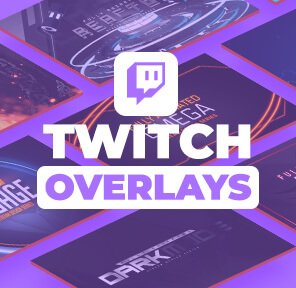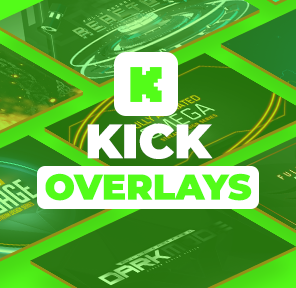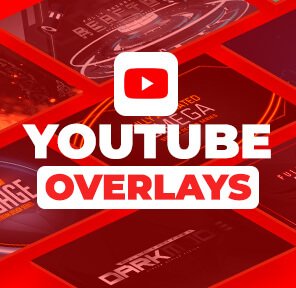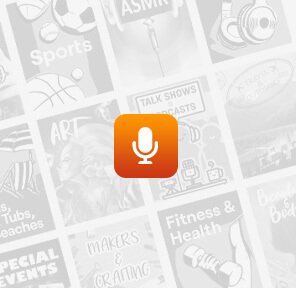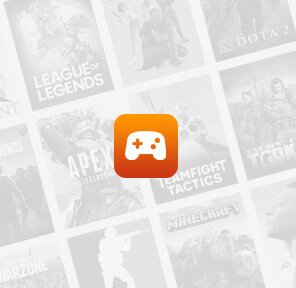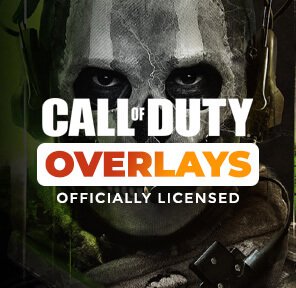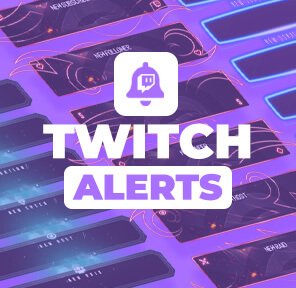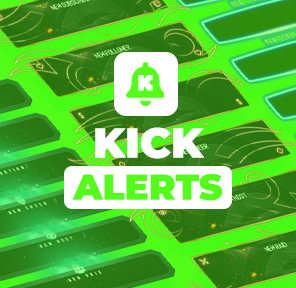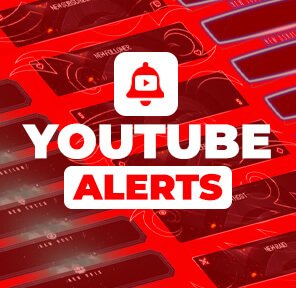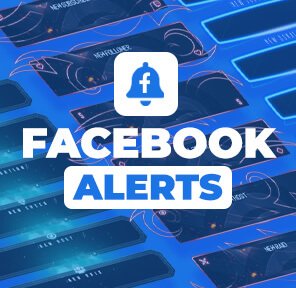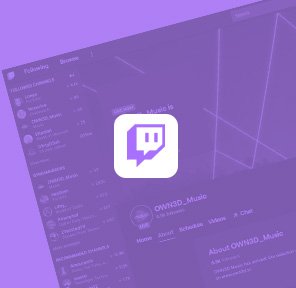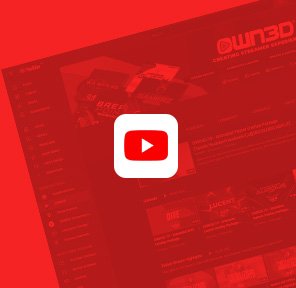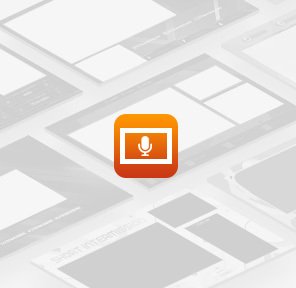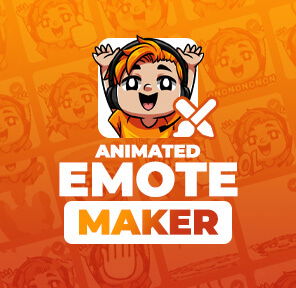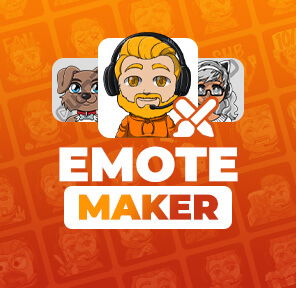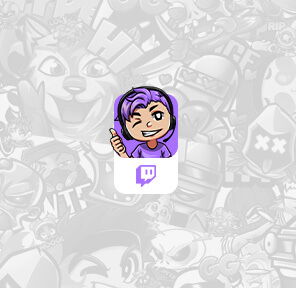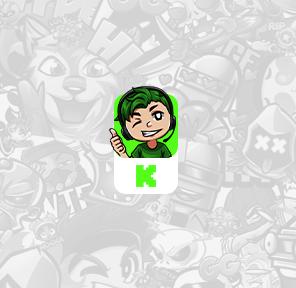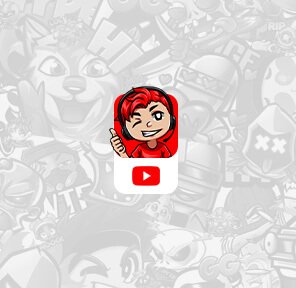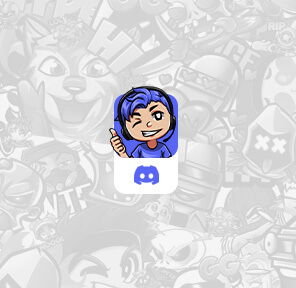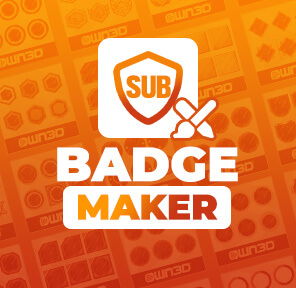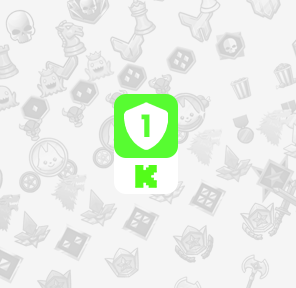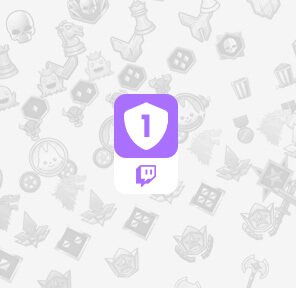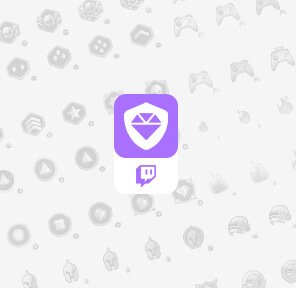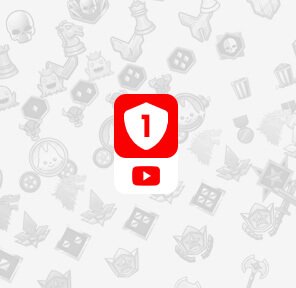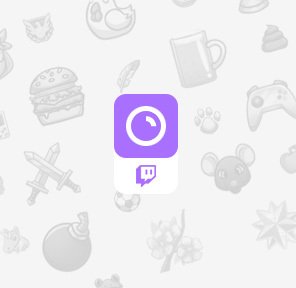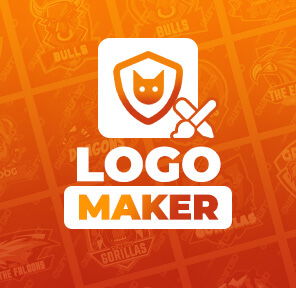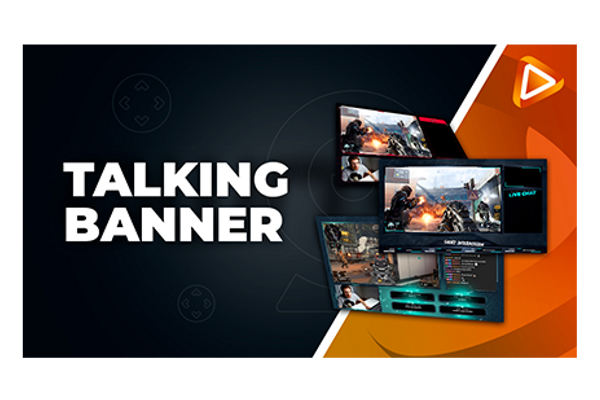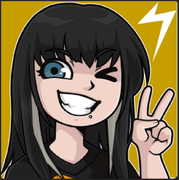Downloading and unpacking your stream overlay package
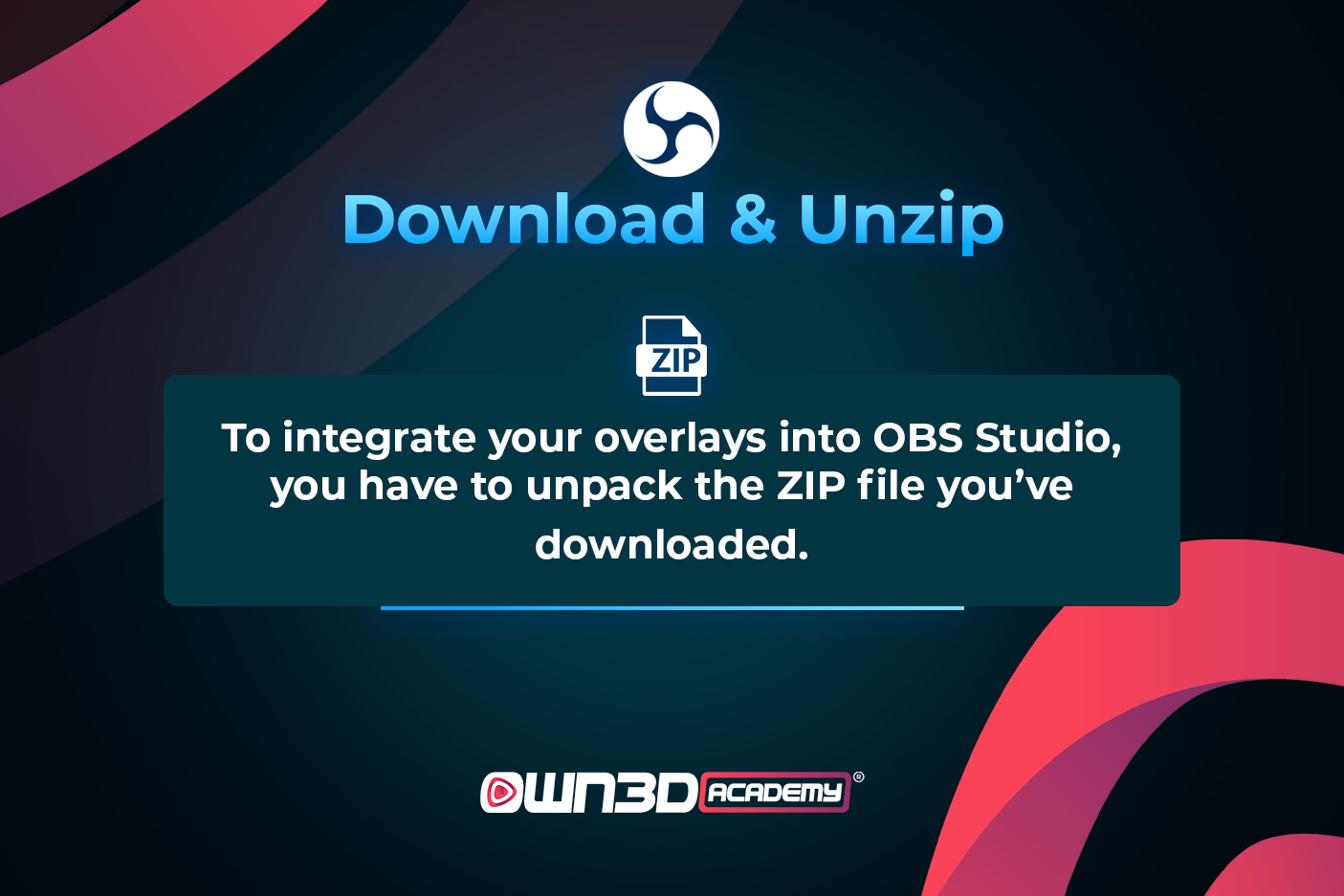
If this is your first time downloading and unpacking your complete OWN3D.tv package, this chapter is for you. If you have already done this, feel free to skip to the next one!
First, you have to download your OWN3D.tv package. Move your mouse over your profile icon next to the shopping cart on the OWN3D.tv website, and a menu will open. Click on the "My downloads" button. There you will find your purchased package. You can select the language of your choice by clicking on the flag symbol before downloading it. Be sure to remember where you save it on your PC, as you will need it right away!
Now you have to unpack your complete OWN3D.tv package. There are several free software that you can download online. We recommend 7-Zip or WinRAR. Install one of this software so that you can extract the contents of the package.
Right-click on your downloaded file to open the Windows menu. Click on "Extract All...". - a window opens where you can select a destination folder for the extracted ZIP folder. If you leave the default selection, the program will save the extracted files directly into the same folder where your ZIP file is located. If you want to select a new folder, click on "Browse" and choose your desired destination path.
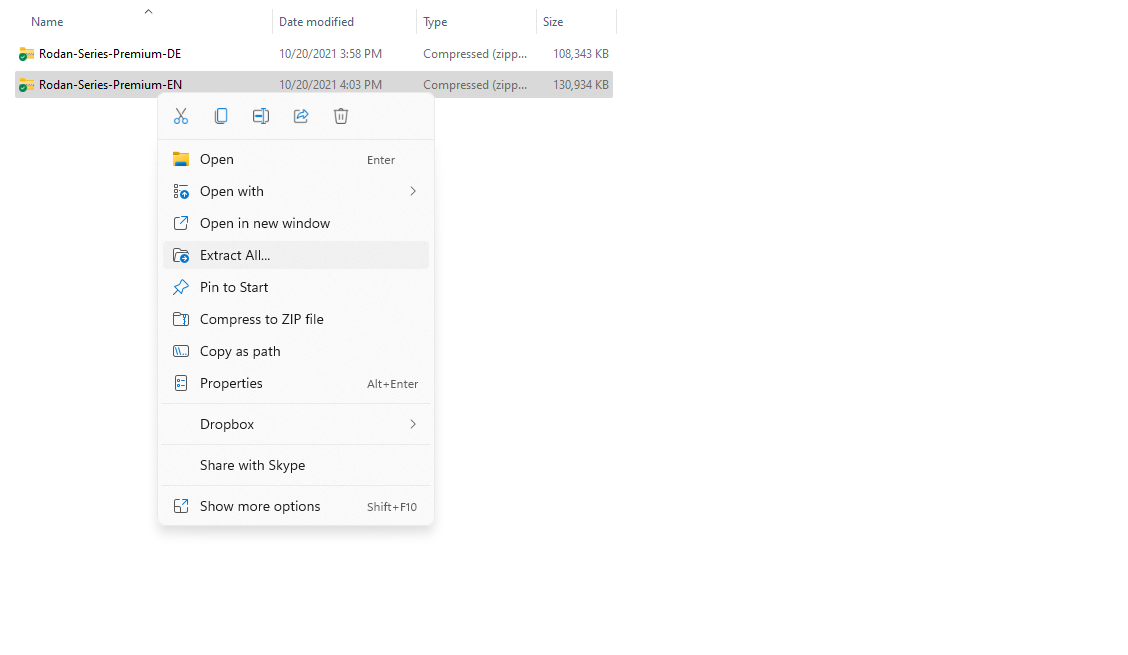
Once you have defined a destination folder, click on Extract. It should be done in just a moment.
Install animated talking banner
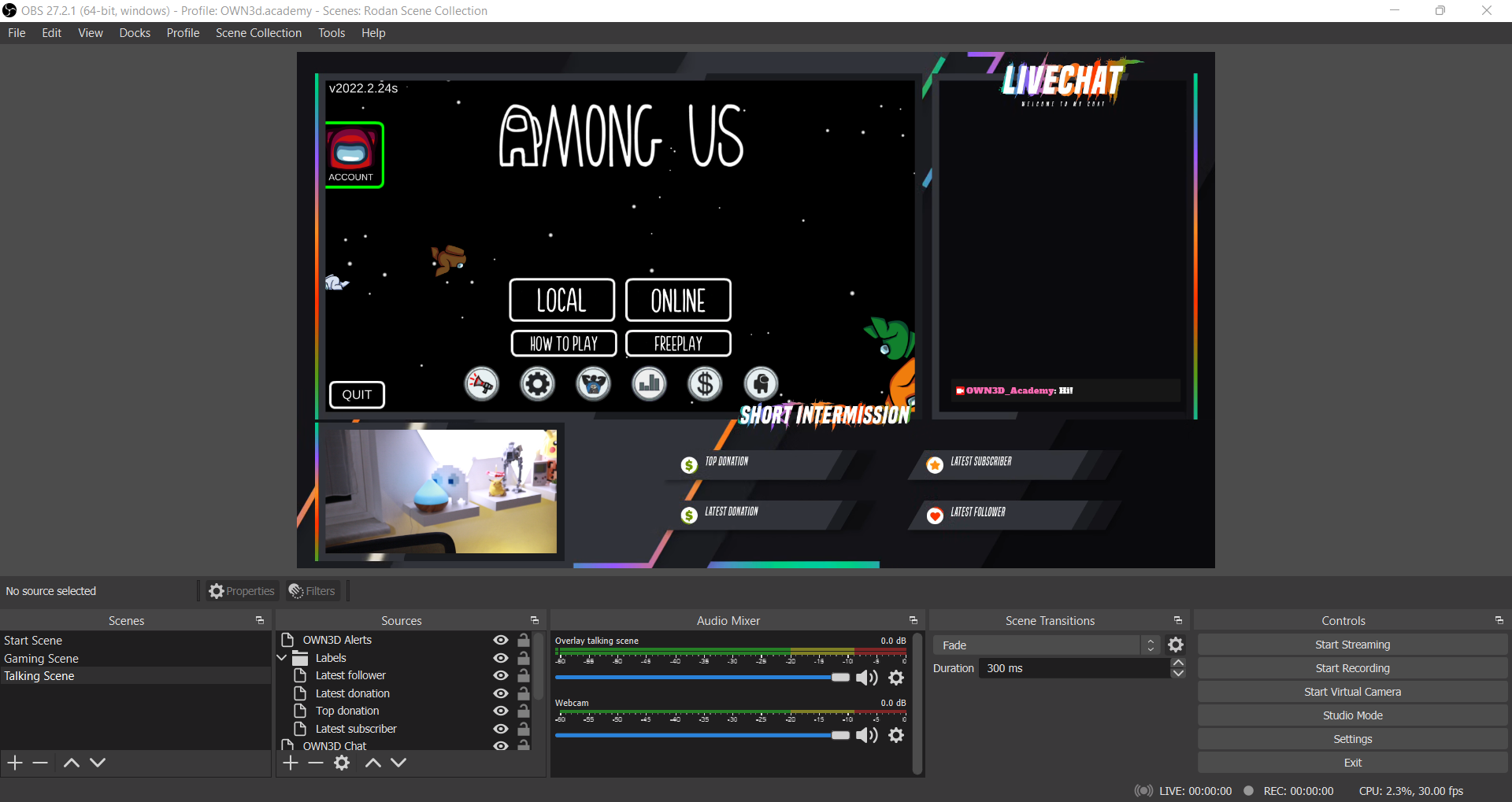
Your complete OWN3D.tv package contains a folder called "Animated-Talking-Banner". This is where you will find the video files you need to set up a scene with gameplay, chat, webcam and labels - these are also known as WEBM files. The package provides several choices of talking banners. Which one you choose is entirely up to you.
We will use the WEBM file "rodan-talkingscreen-webcam" to show you how to insert this WEBM file as a source in your OBS scene. In the next lessons you will learn how to integrate the different elements and other sources.
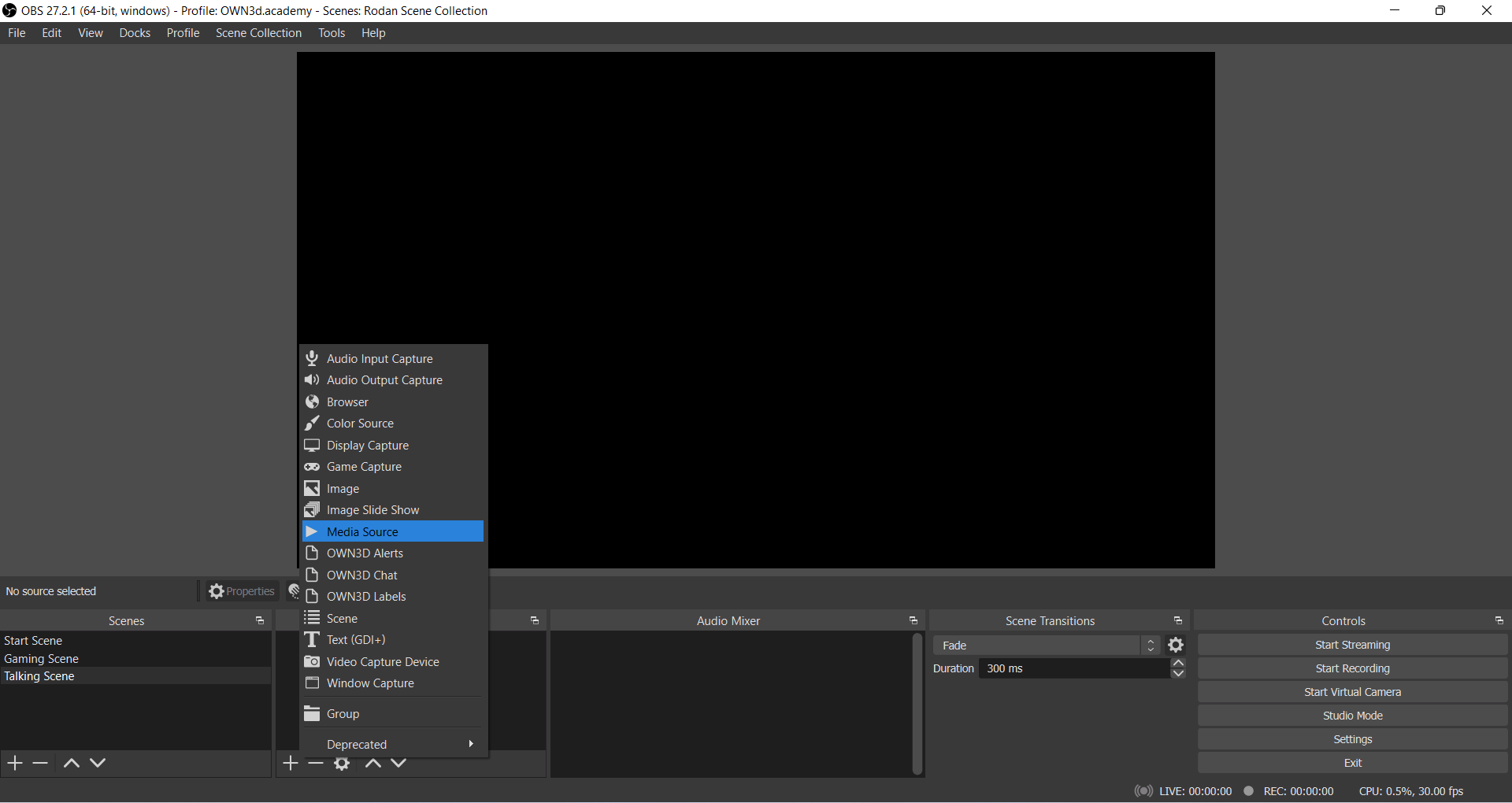
Look for the "Scenes" dock in OBS Studio and select the scene where you would like to insert the video file. We have named this "Talking Scene". Clicking "+" in the "Sources" dock will bring up a drop-down menu that allows you to include various elements in your stream scene. Now select "Media Source" in the menu to add your video file.
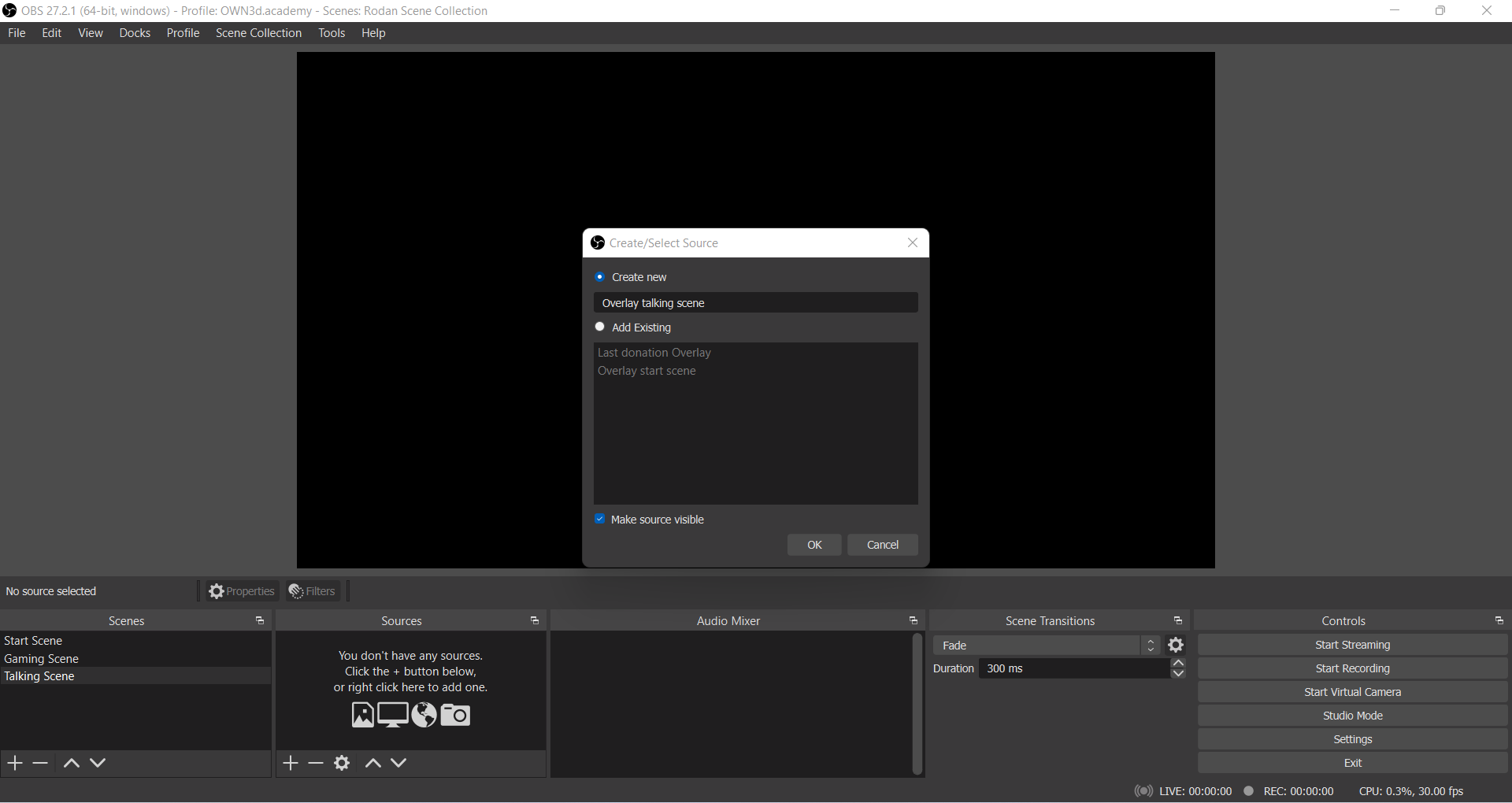
The "Create/Select Source" window appears. Here you can either create a new source or insert an existing one into your scene. This means that you can directly add a source you’re already using in a different scene to this one (via the “Add existing” list) without having to set it up all over again from scratch. Name your new source (e.g., "Overlay talking scene") and then click on "OK."
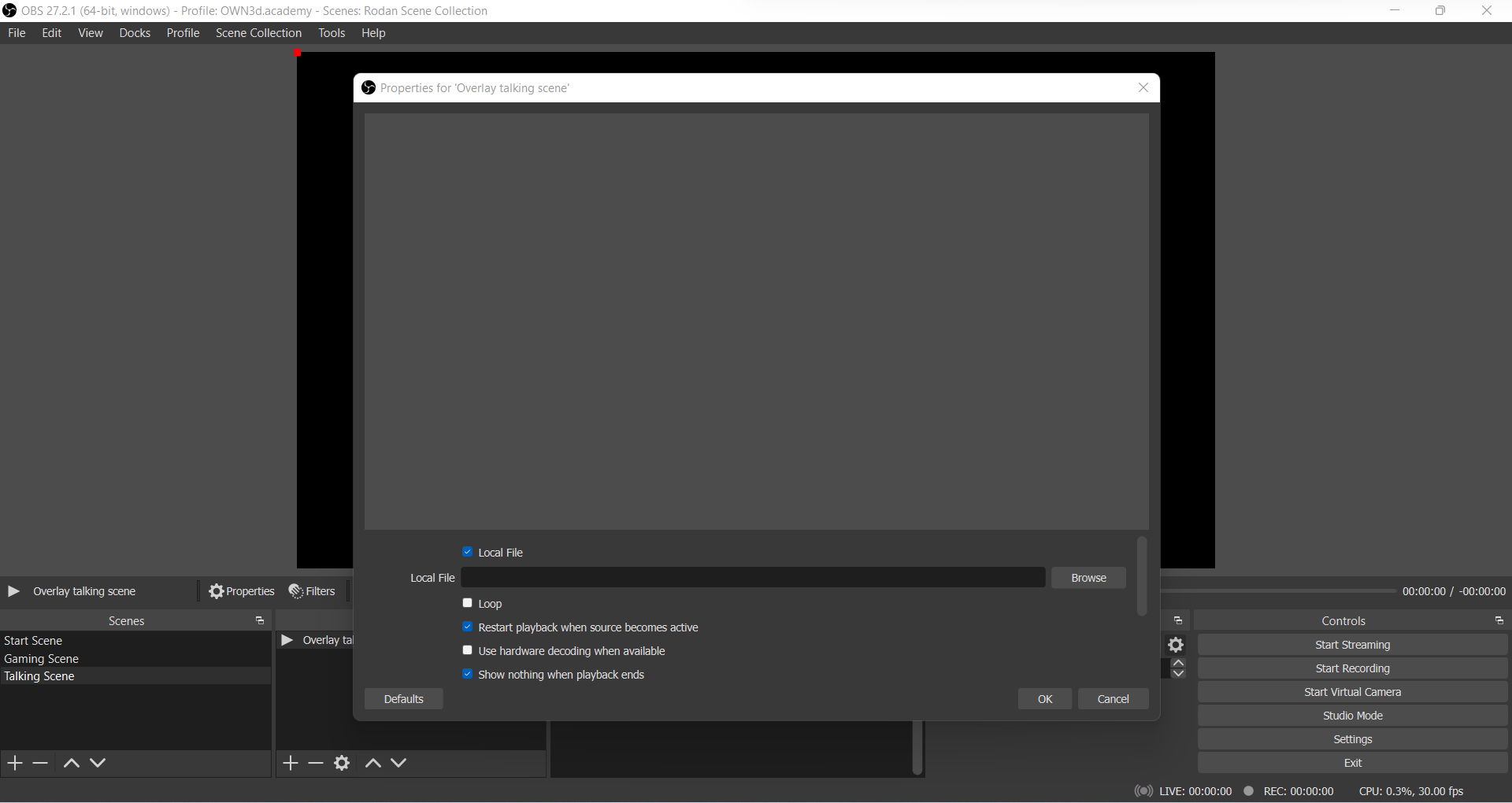
Source properties
This will take you to the properties window of your new media source. This is where you will add the WEBM file to the OBS scene. Click on the "Browse" button on the right side of "Local File." A Windows Explorer window will pop up. Navigate to the unzipped folder of your complete package and select the desired .webm file from the "Animated-Talking-Banner" folder. Since we’re currently setting up a talking scene, we choose "rodan-talkingscreen-webcam."
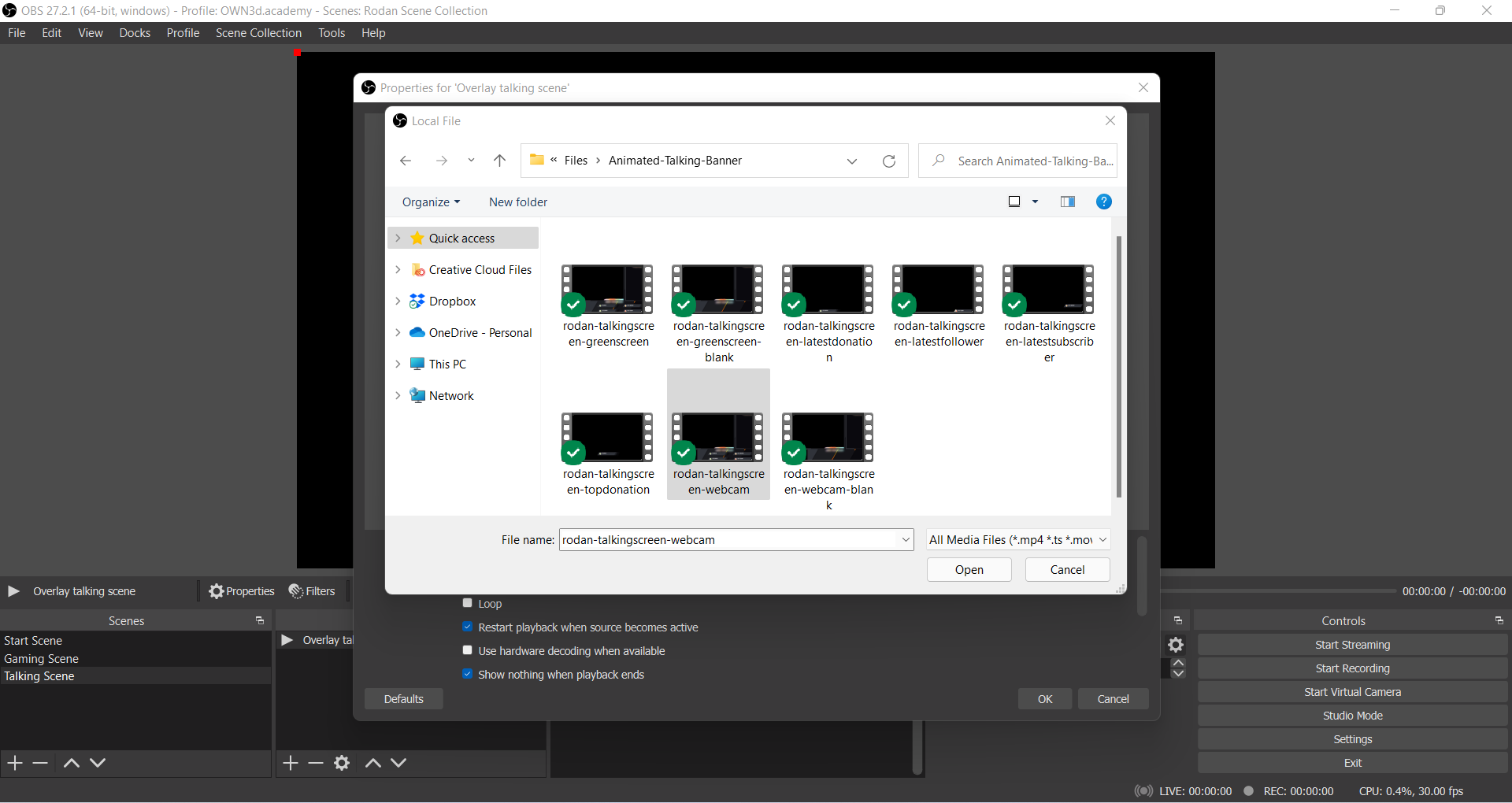
Now set the checkmark to "Endless loop" so that the file remains continuously animated, and click on "OK."
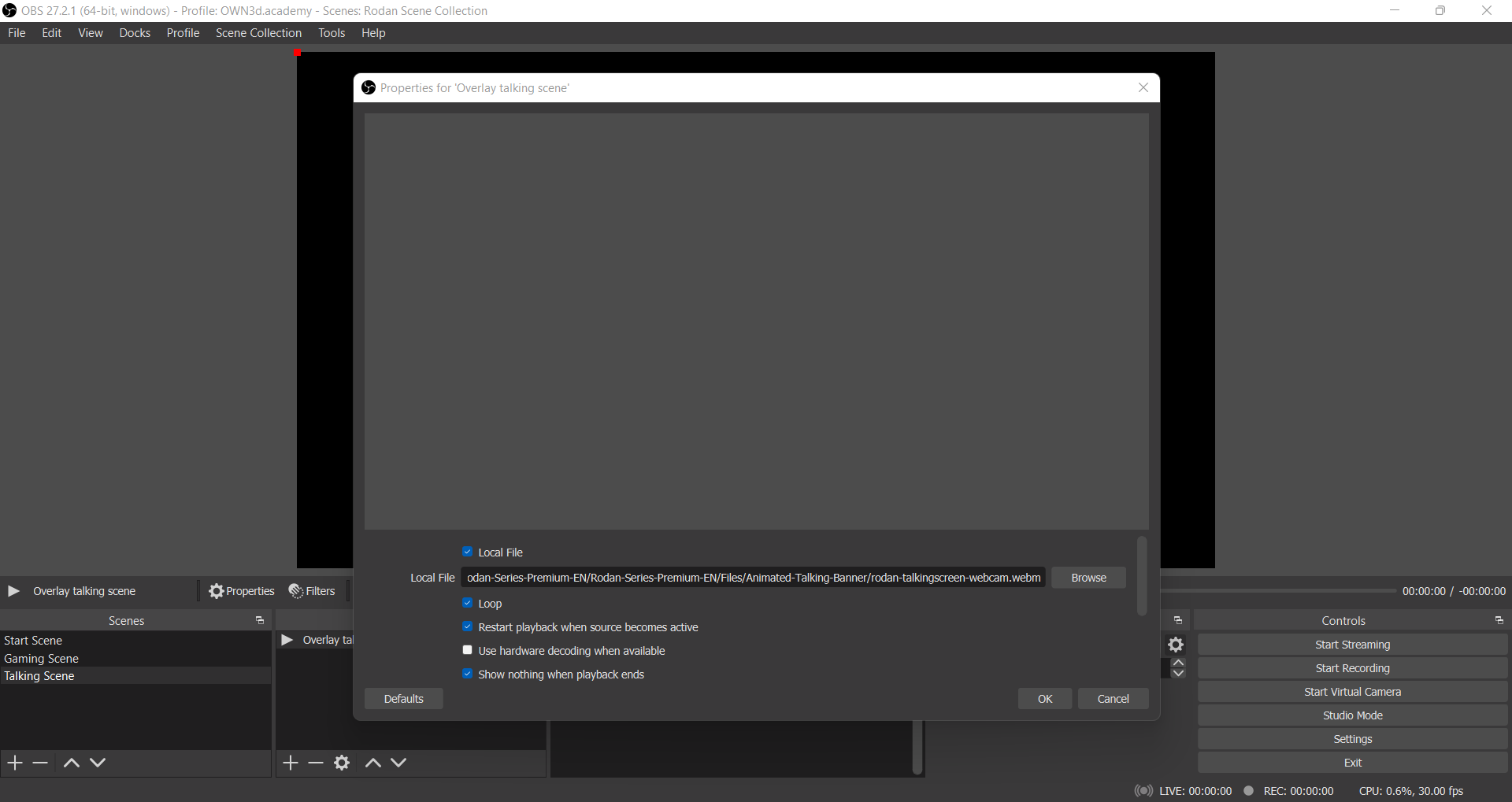
Now you have integrated your talking screen! You can always double-click on the media source to return to the properties window if you ever want to make changes to your source settings (speed, color range, looping or swapping out the WEBM file entirely).
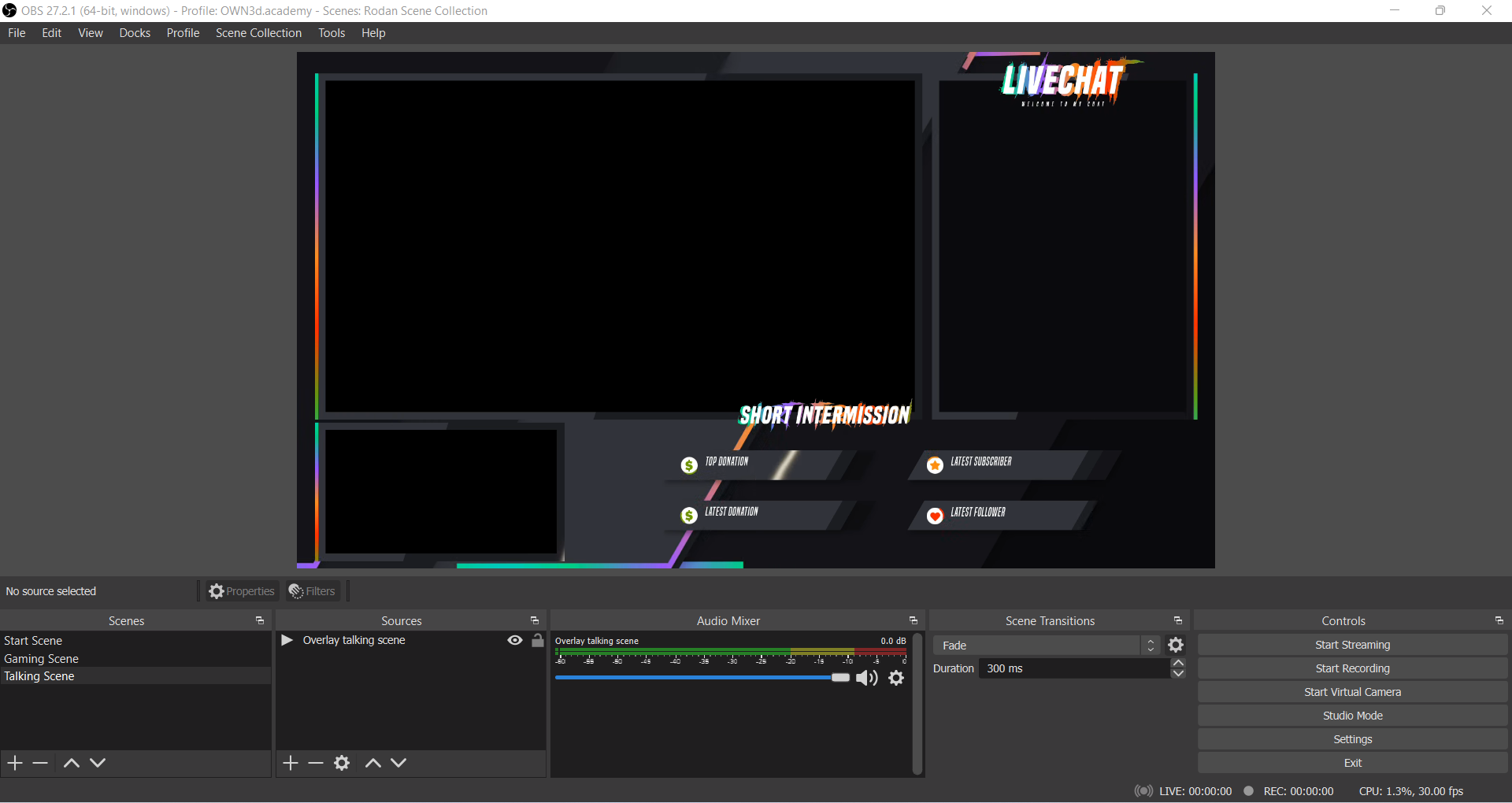
Edit media source in the live preview
To make changes to your media source in the live preview, you can either directly click on it on the video screen or by selecting it from the “Sources” dock. A red frame will appear around it in the live preview.
To change the size of the media source, grab it by the corners. You can move it across the screen by drag-clicking on the source. You can also crop it by pressing "Alt" at the same time on the edges. The frame of the cropped area turns from red to green. If you cut away too much, you can grab the frame again with "Alt" at the same place and change the cut.
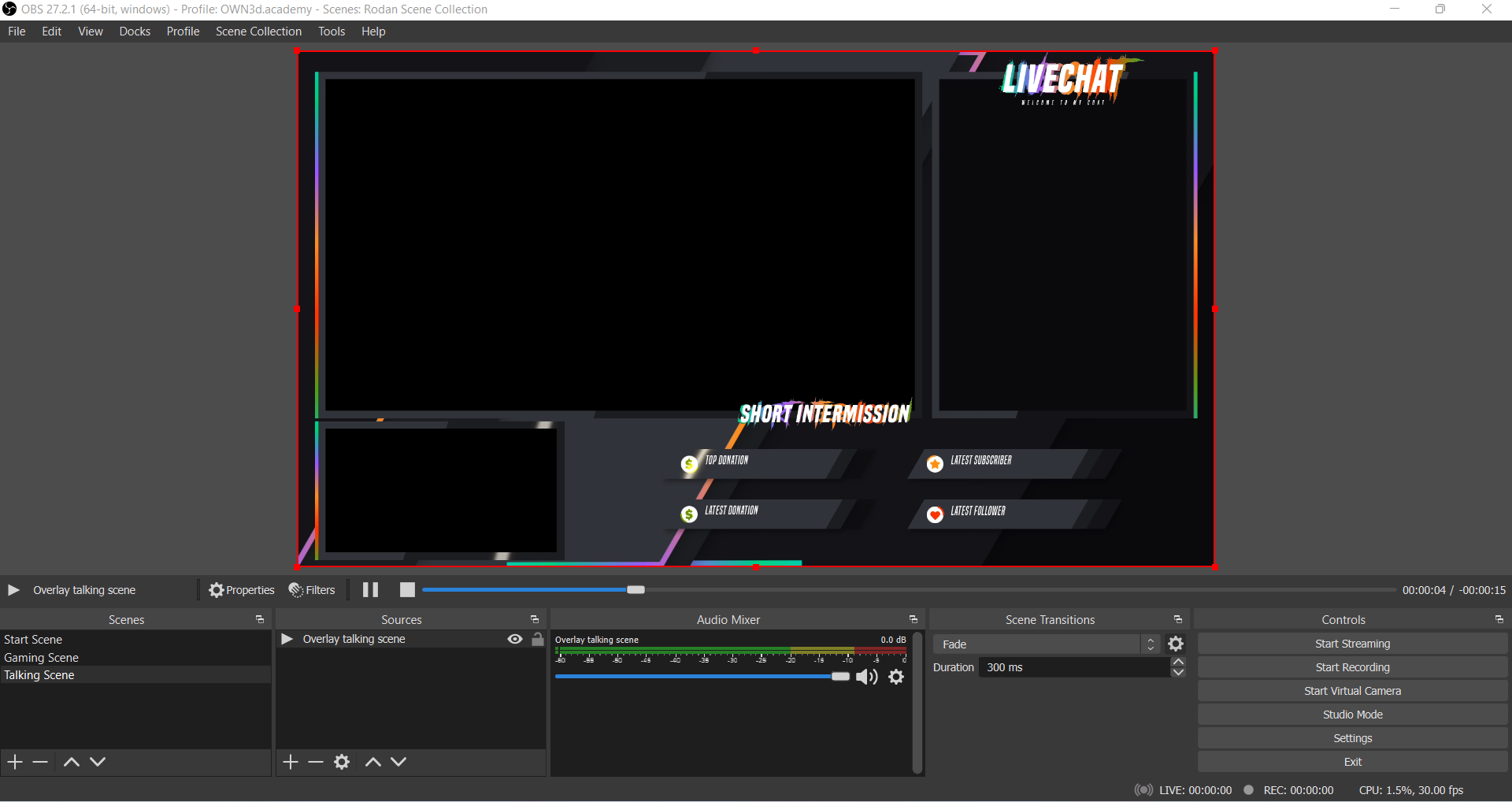
These editing options work with almost all sources in OBS. If something goes wrong, you can undo the last action with "Ctrl + Z" or restore it with "Ctrl + Y."
Add text to a scene in OBS
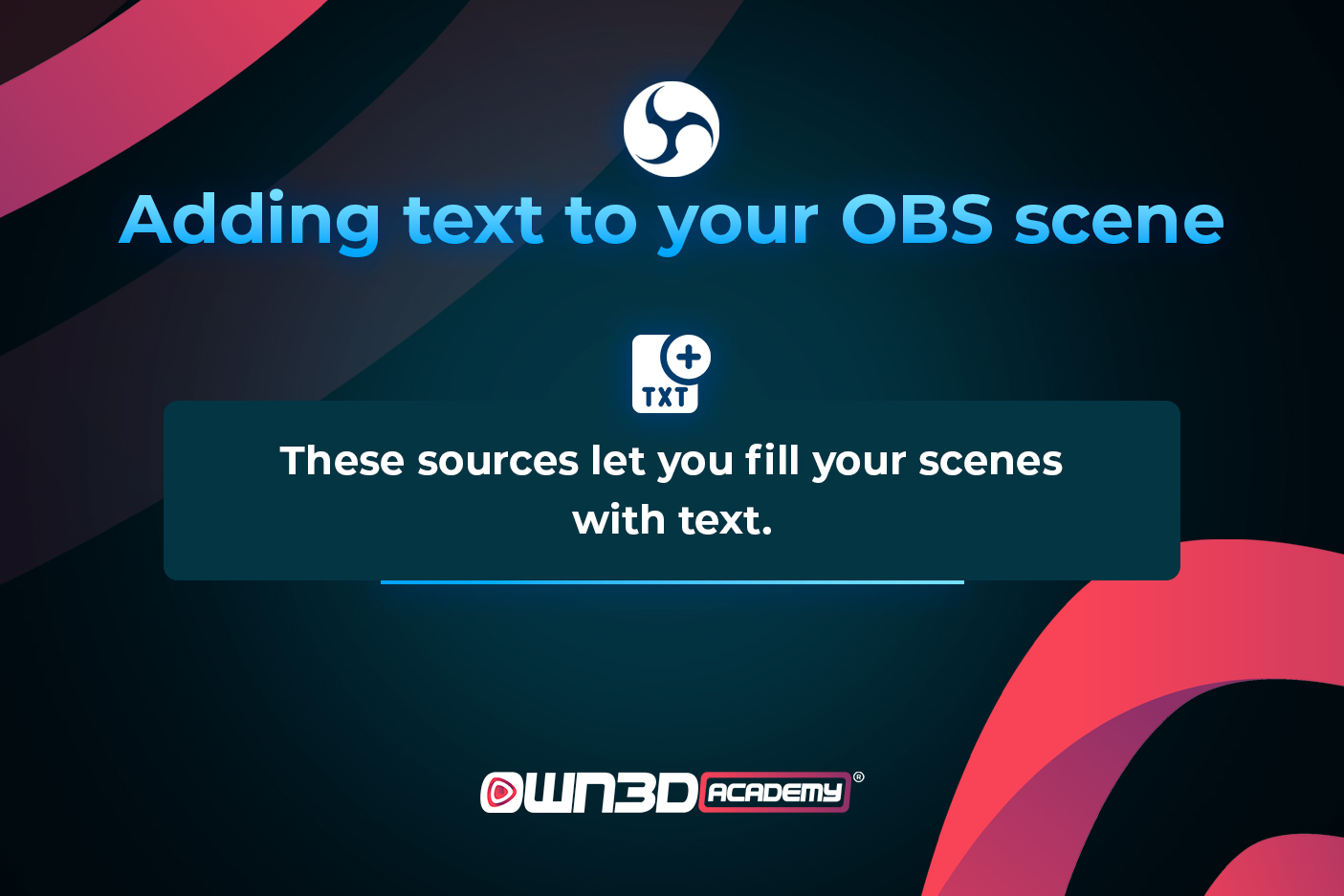
Look for the "Scenes" dock in OBS Studio and select the scene where you want to insert the text source. Clicking "+" in the "Sources" dock will bring up a drop-down menu that allows you to include various elements in your stream scene. Now select "Text (GDI+)" in the menu to add your text source.
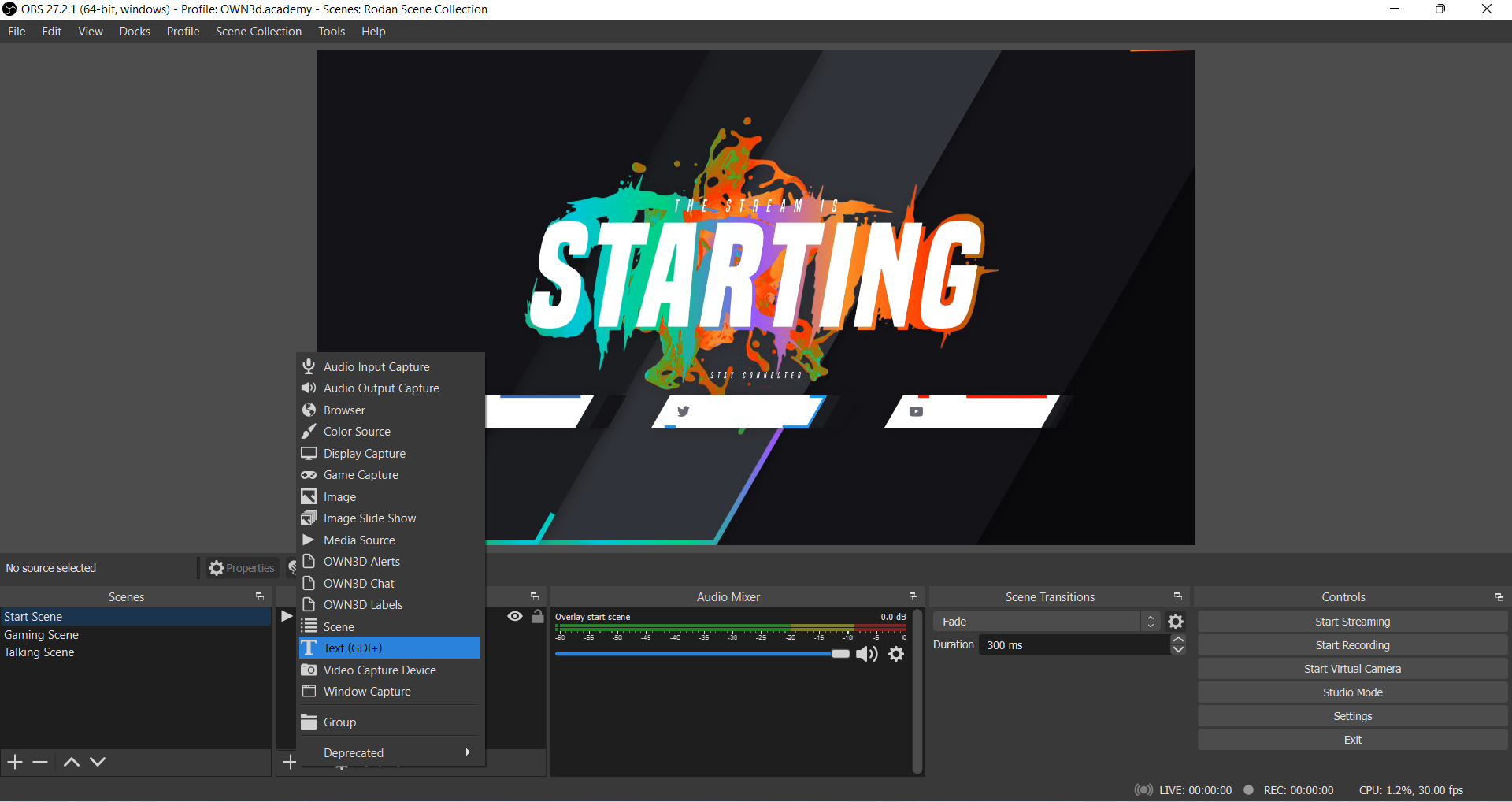
The "Create/Select Source" window appears. Here you can either create a new source or insert an existing one into your scene. This means that you can directly add a source you’re already using in a different scene to this one (via the “Add existing” list) without having to set it up all over again from scratch. Name your new source (e.g., "Instagram name") and then click on "OK."
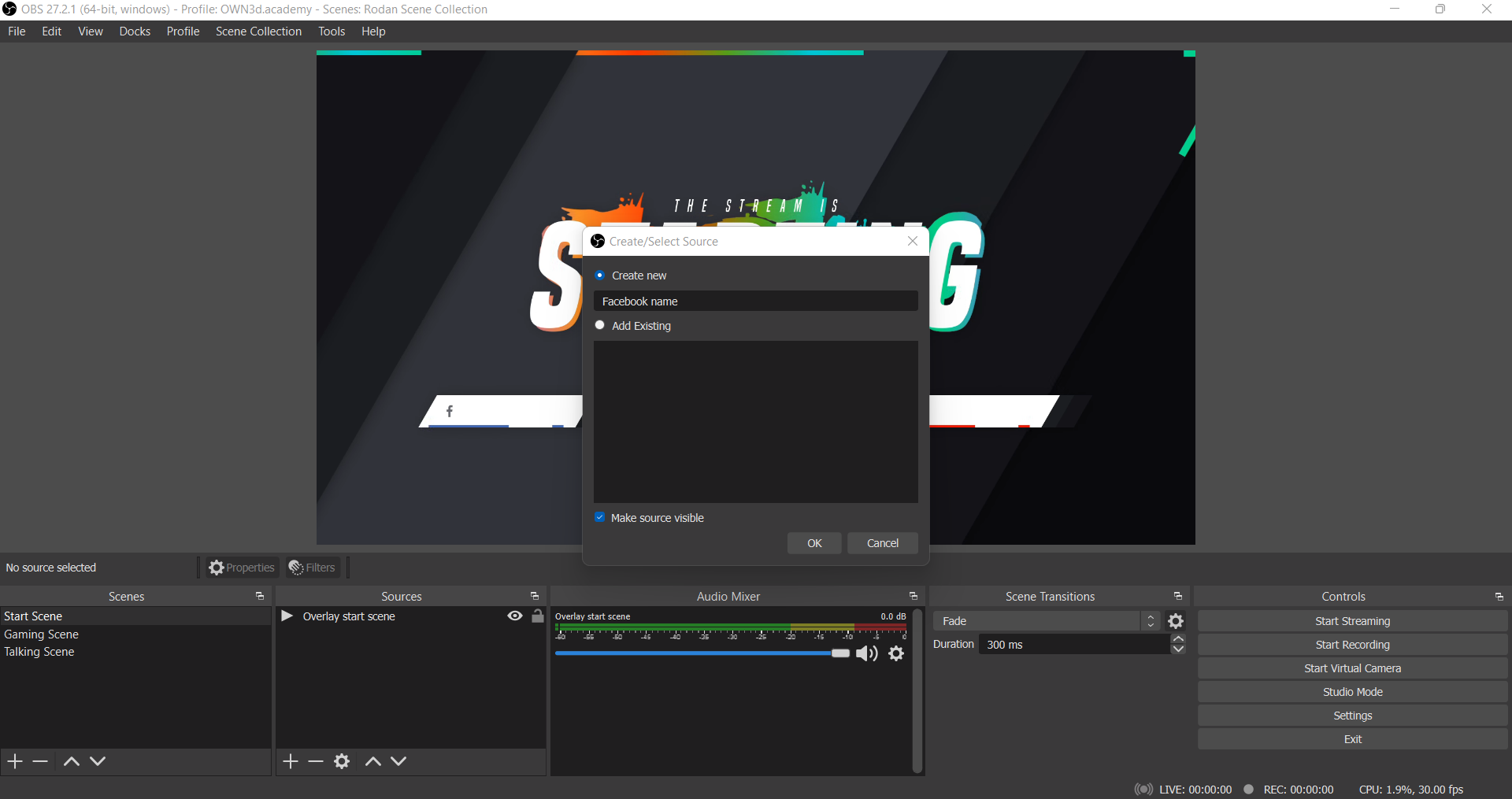
Text source properties
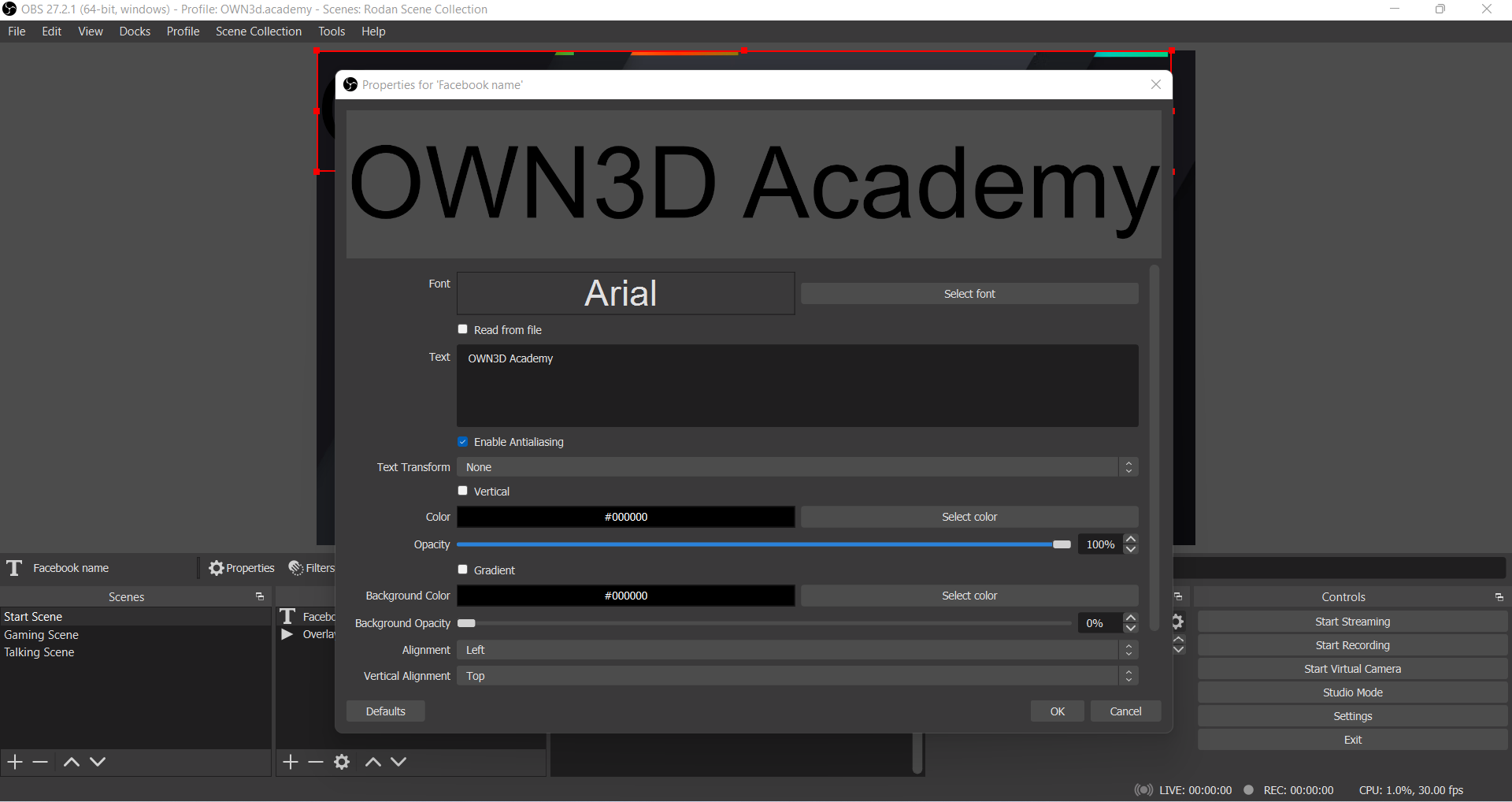
This will take you to the properties window of your new text source. Write your text in the "Text" field: in our example, it is "OWN3D.academy". You can also adjust the various properties (font, color, opacity, background, alignment and more) of your text source in this menu. Once you’re done, click on "OK". Your text source is now added to your scene.
You can always double-click on the text source to return to the properties window if you ever want to make changes to your source settings described above.
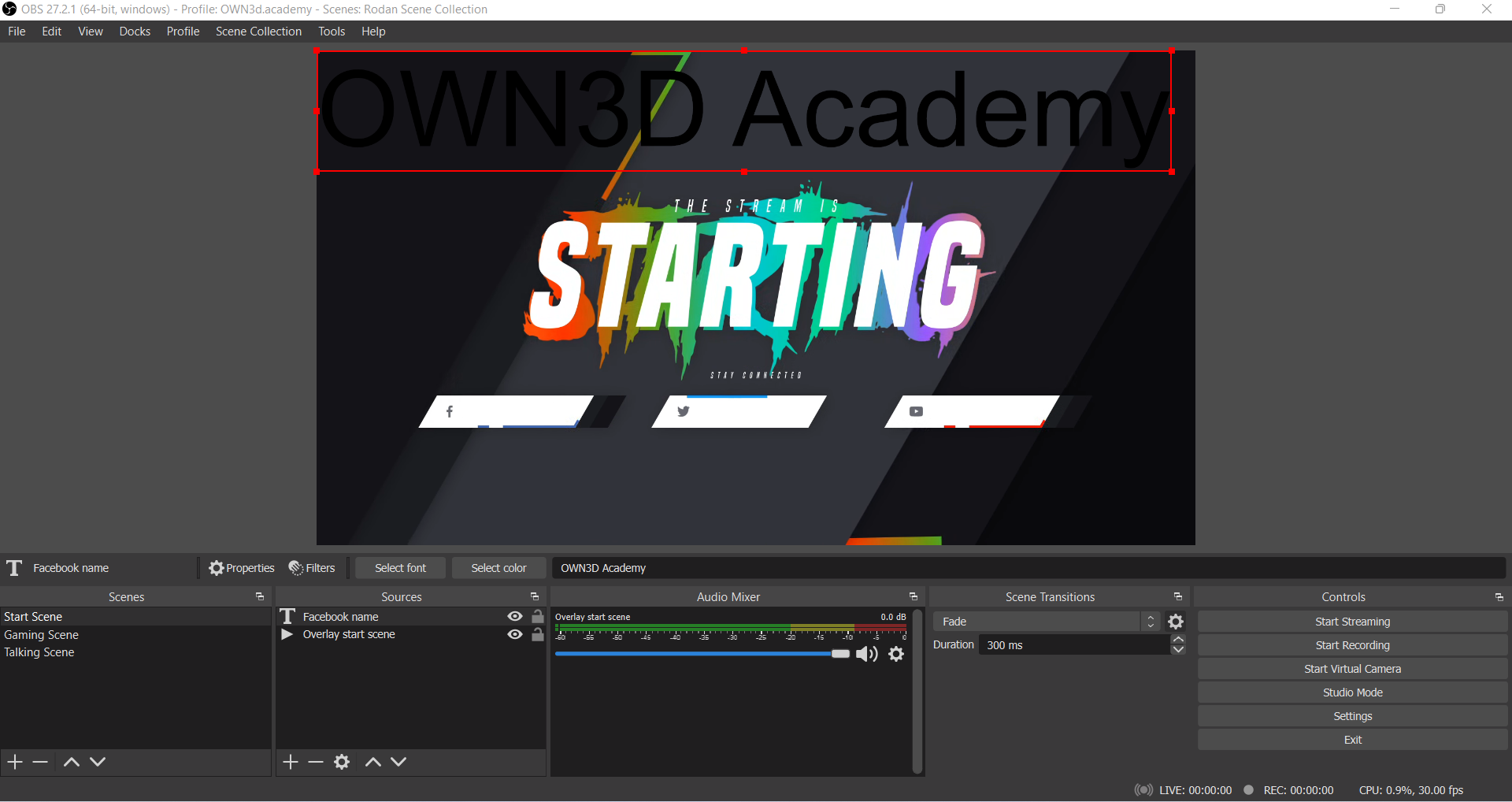
Edit media source in the live preview
To make changes to your media source in the live preview, you can either directly click on it on the video screen or by selecting it from the “Sources” dock. A red frame will appear around it in the live preview.
To change the size of the media source, grab it by the corners. You can move it across the screen by drag-clicking on the source. You can also crop it by pressing "Alt" at the same time on the edges. The frame of the cropped area turns from red to green. If you cut away too much, you can grab the frame again with "Alt" at the same place and change the cut.
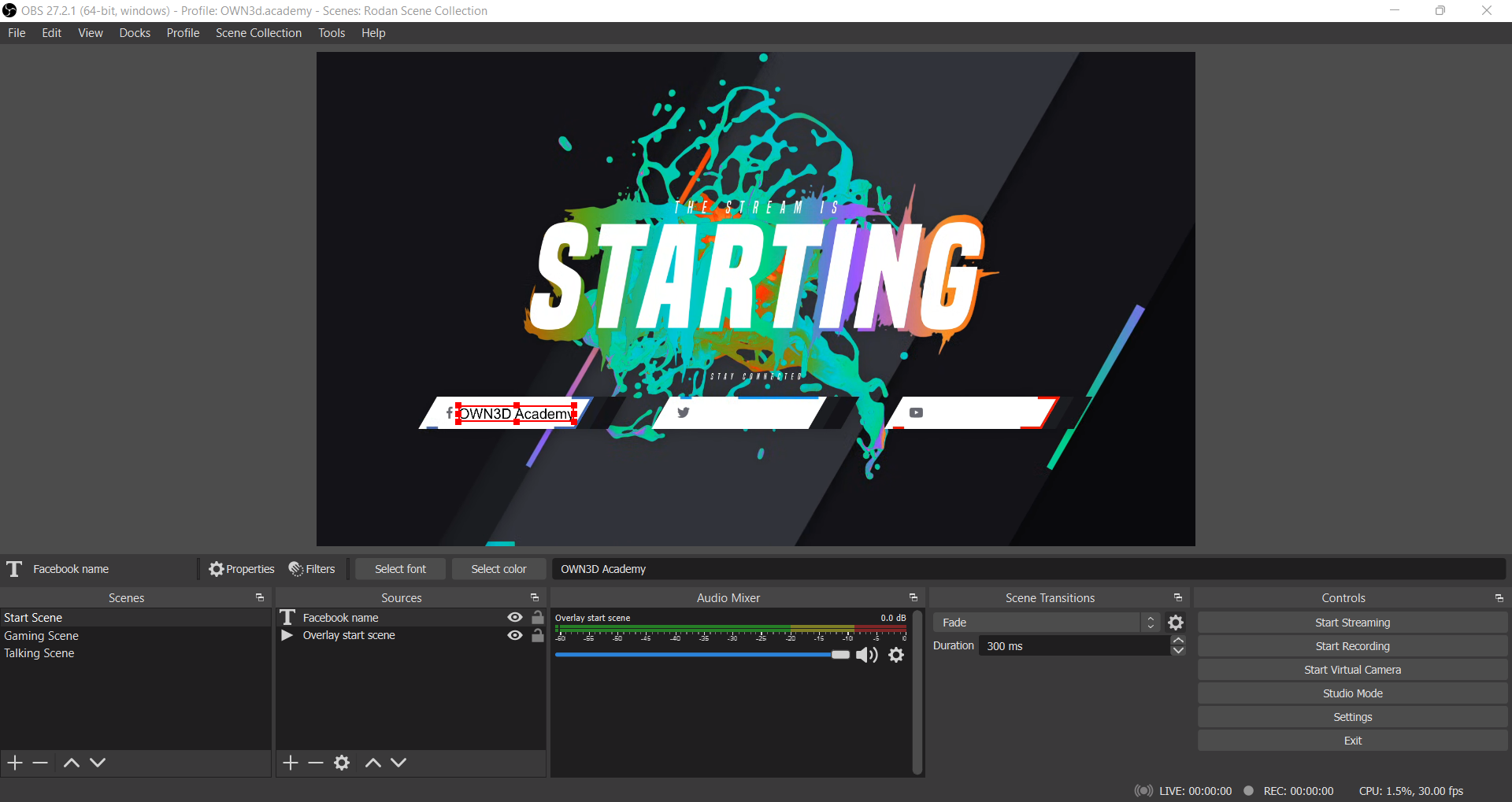
These editing options work with almost all sources in OBS. If something goes wrong, you can undo the last action with "Ctrl + Z" or restore it with "Ctrl + Y."
Inserting labels with OWN3D Pro
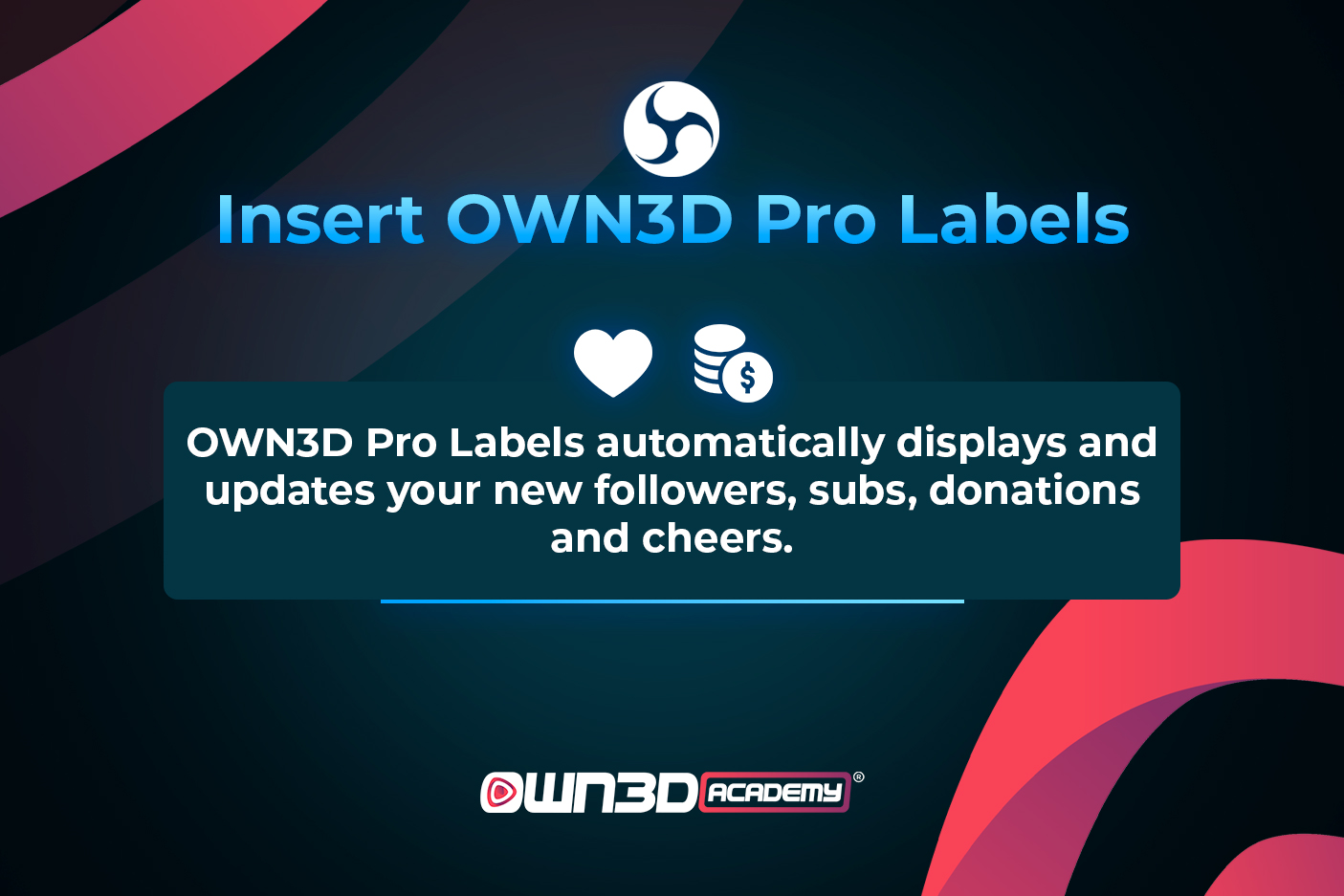
This chapter is for those who have already registered for OWN3D Pro and installed the OWN3D Pro tool for OBS Studio. If you still need help with this, take a look at the OWN3D Pro: Setup and First Steps chapter!
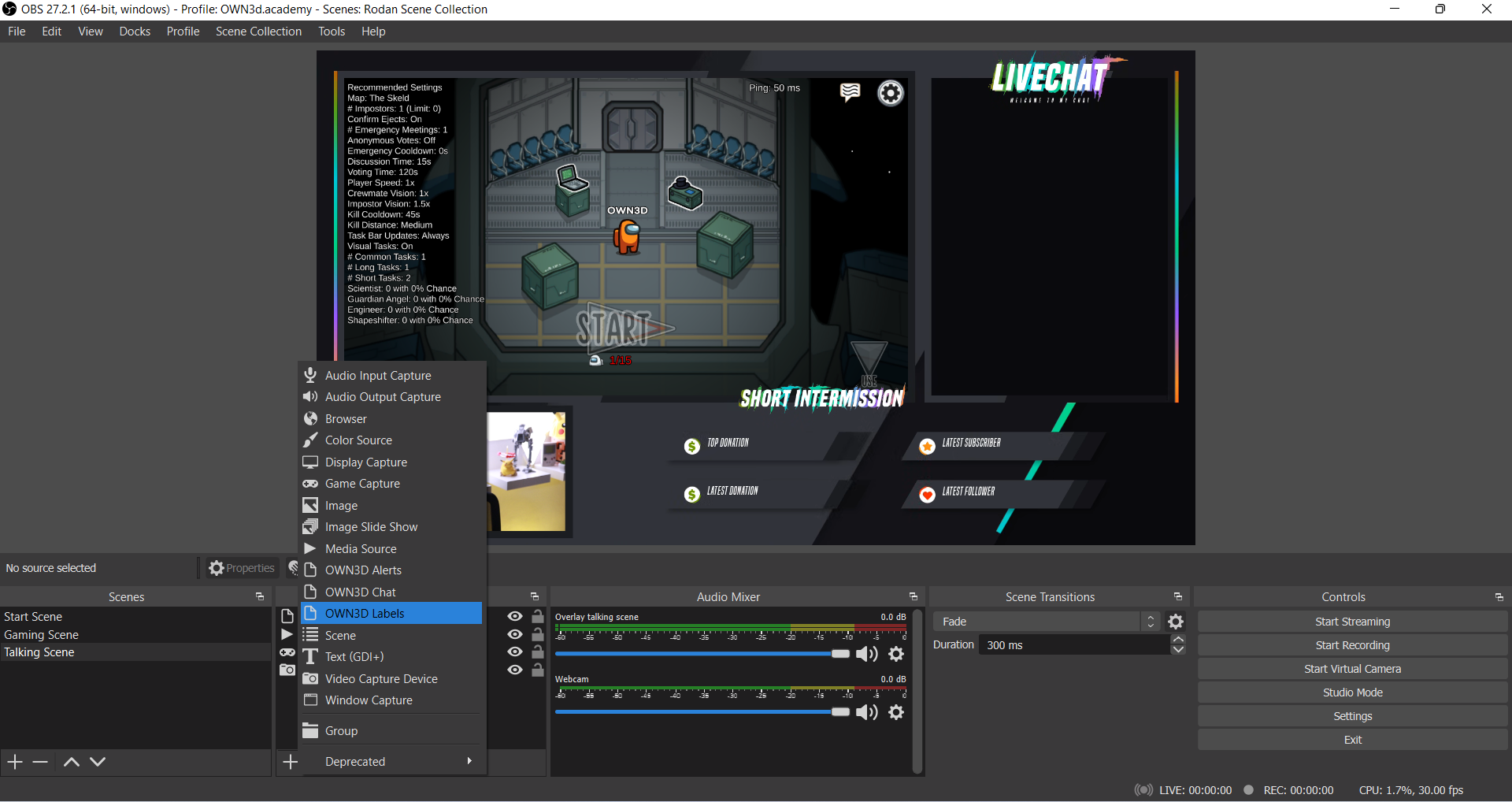
Once you have installed OWN3D Pro for OBS and logged into OBS Studio with your OWN3D Pro credentials, you can select the "OWN3D Labels" source in OBS under "Sources" by clicking on the "+". Go to "Create New", name your source (we call it "Latest Donation") and click "OK".
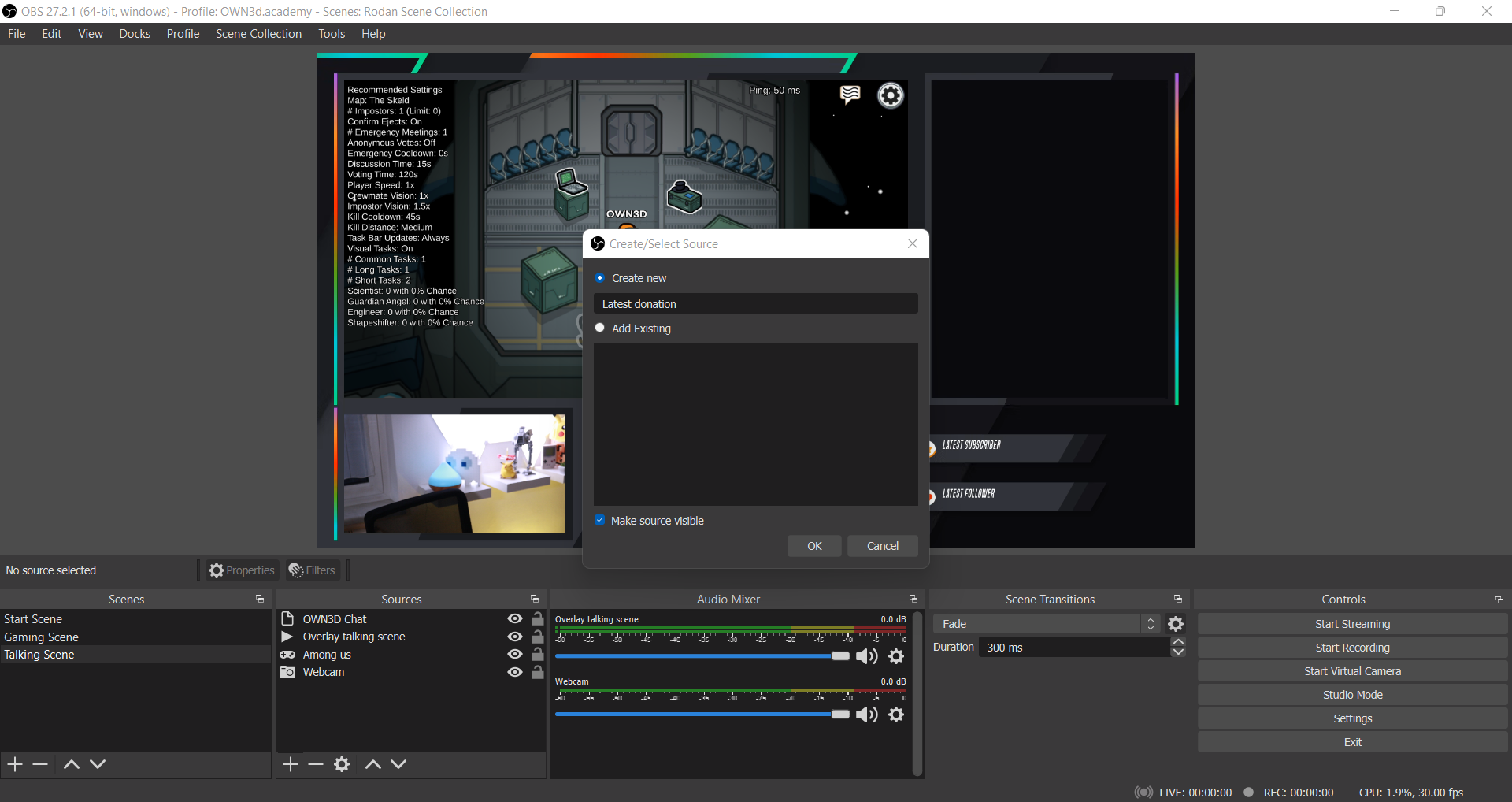
OWN3D Pro Labels source properties
Now the properties window will automatically open. Here is where you can set up your new OWN3D Pro label. Select "Last Donation" in the “Type” dropdown list. Choose the desired color, size and font. With that, your label is ready! Your label will be displayed inside the red frame as soon as the first event (in this example, a donation) happens.
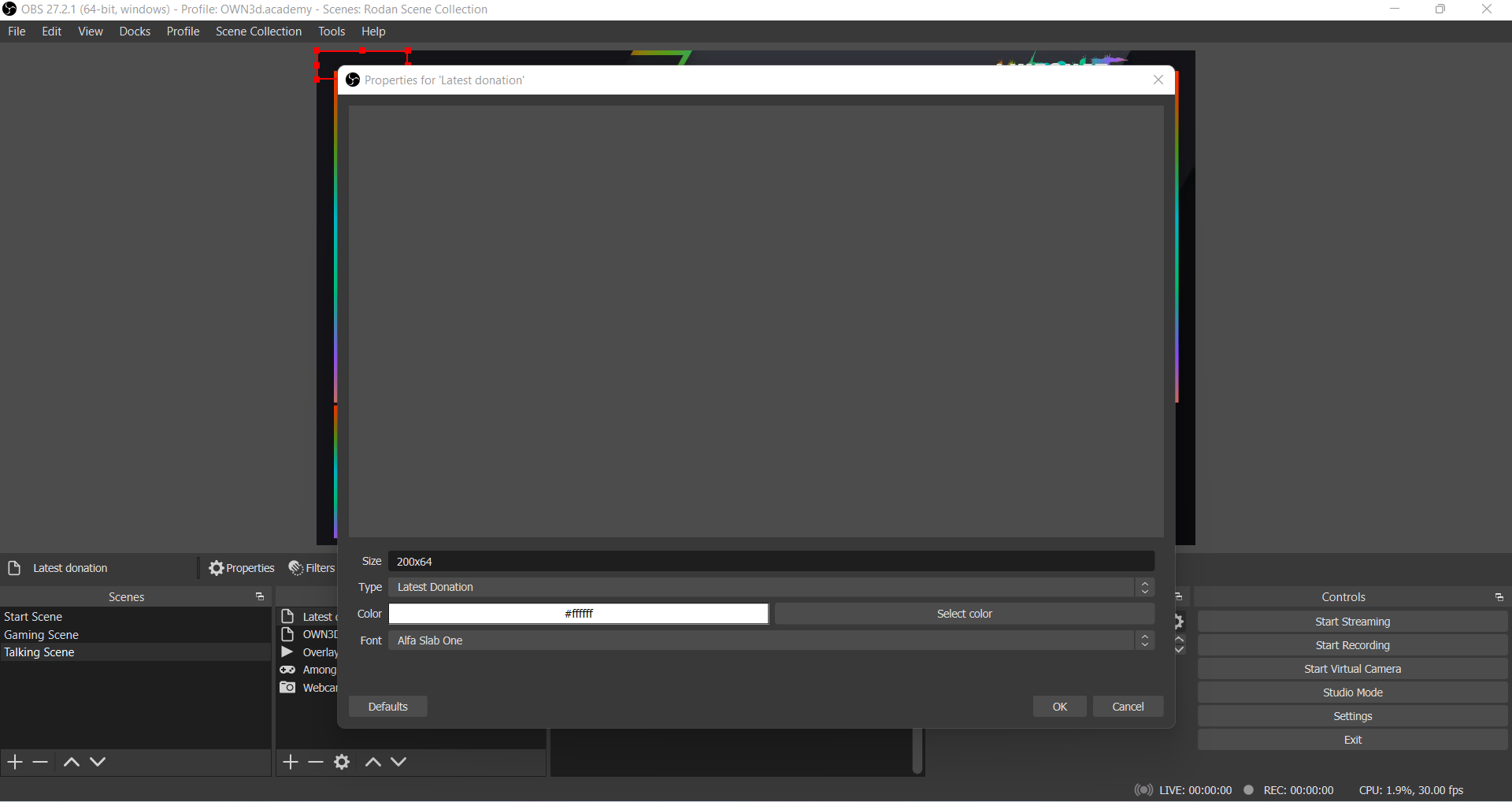
If you’d like to change your label’s size, do so within the properties menu. It is also possible to manually resize the source in Preview mode, but then the source will be pixelated.
Moving labels in the live preview
You can move the label now. Click on the label in the "Sources" dock, and you will see that a red frame forms around the label. Now you can grab and drag it around the preview screen.
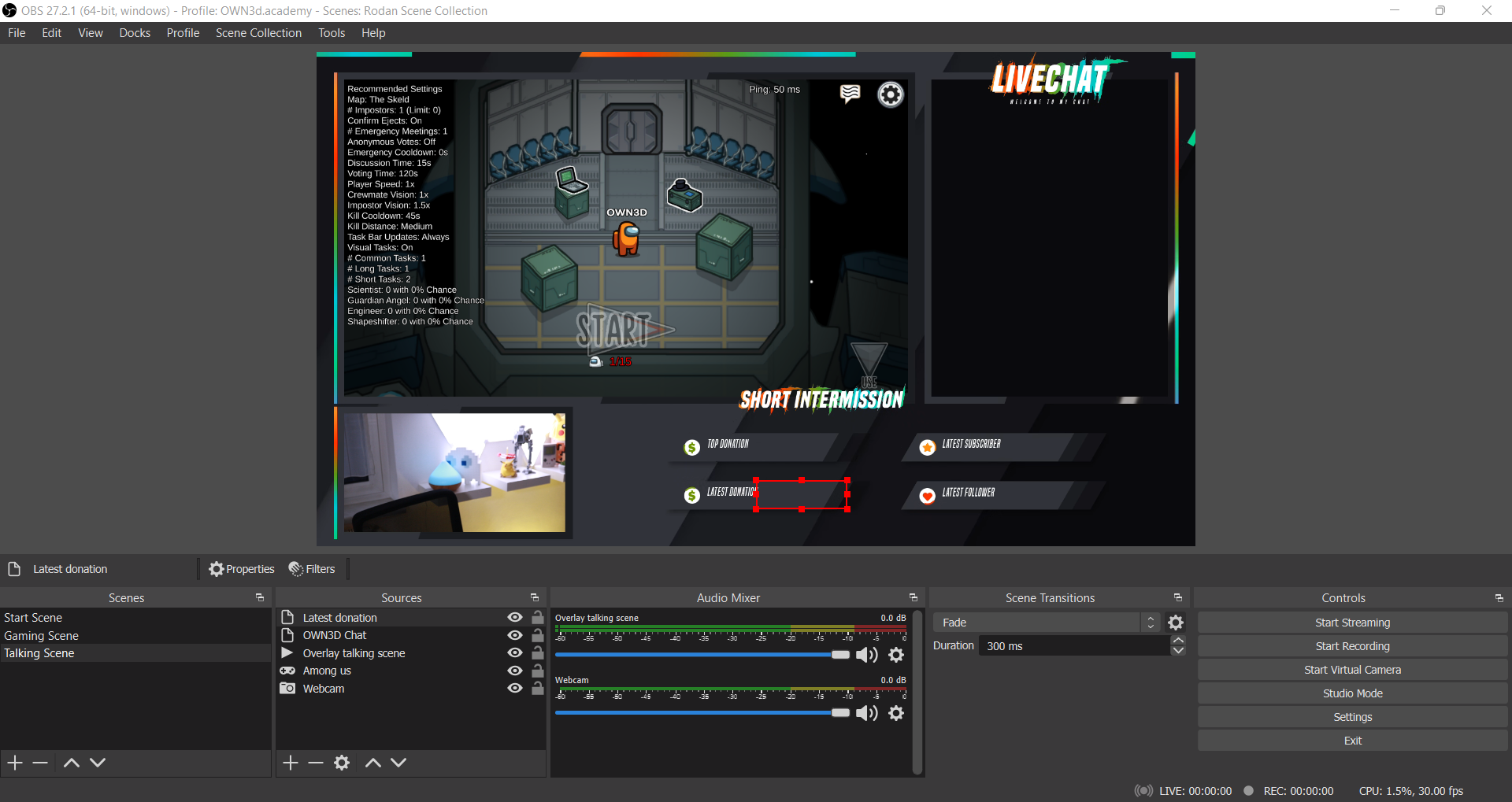
Inserting your label into other scenes
If you want to integrate your already existing OWN3D Pro label into another scene, you can also select the source "OWN3D Labels" in the other scene at "Sources" by clicking on the "+". Since the label already exists in your scene collection, having already created it yourself, you only have to select "Add existing". Click on the label’s name and on "OK": now you have the exact same label as in your other scene.
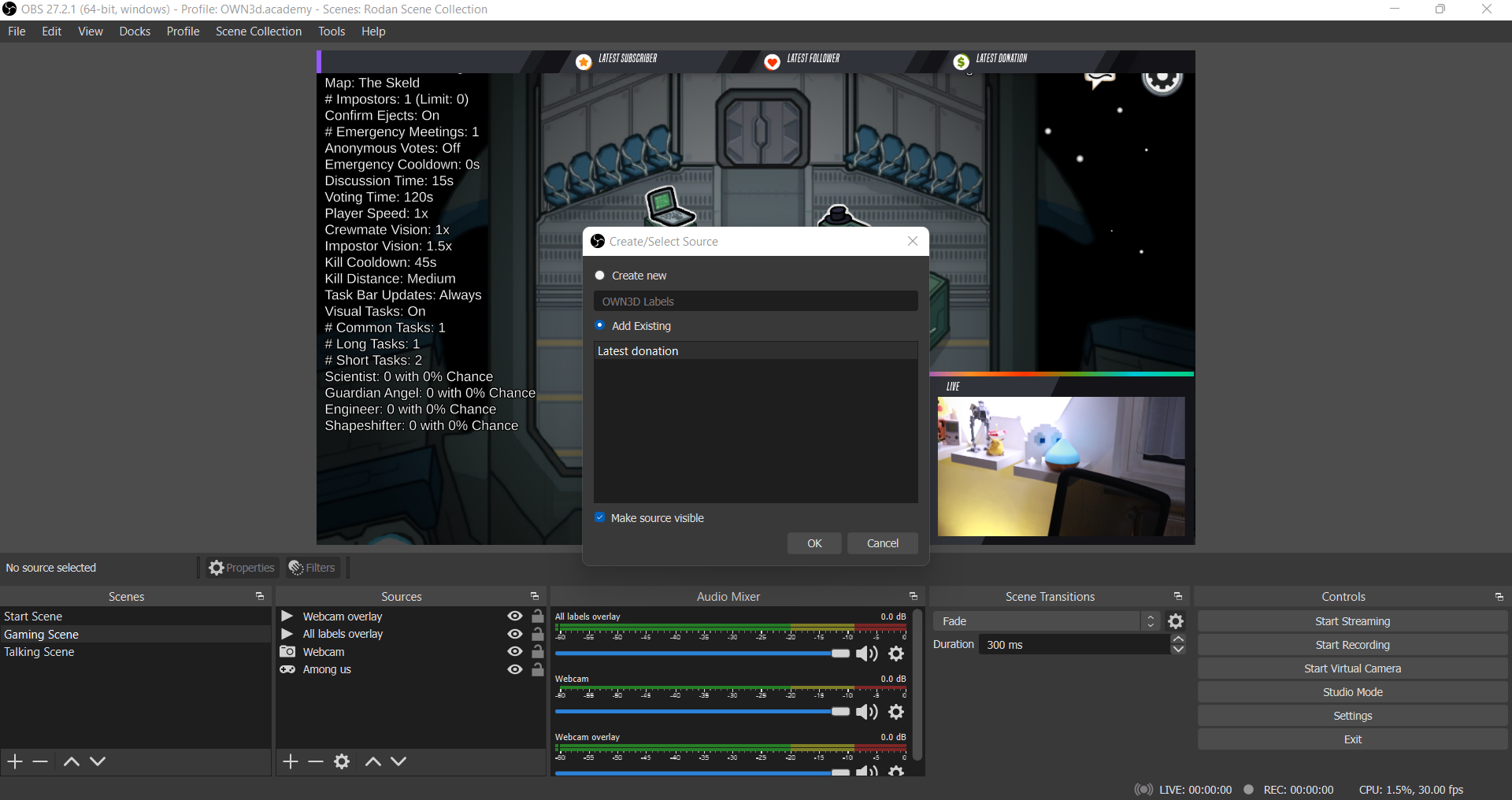
Keep in mind that changing the label’s font or color in your new scene will also change it everywhere else since it is the identical source. If you want to create an individual, new label, follow the instructions at the beginning of this lesson and make a completely new source.
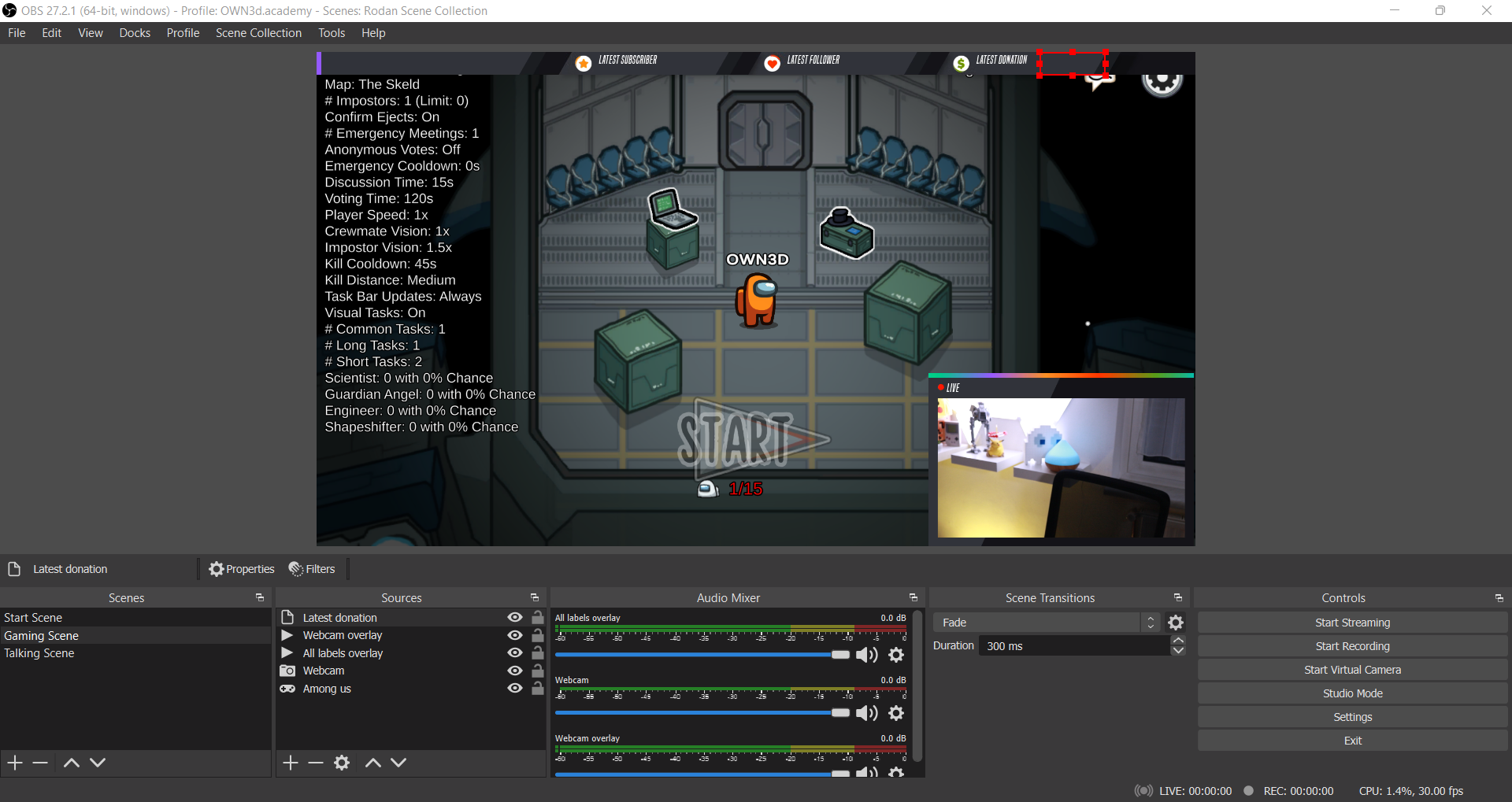
Add livechat with OWN3D Pro
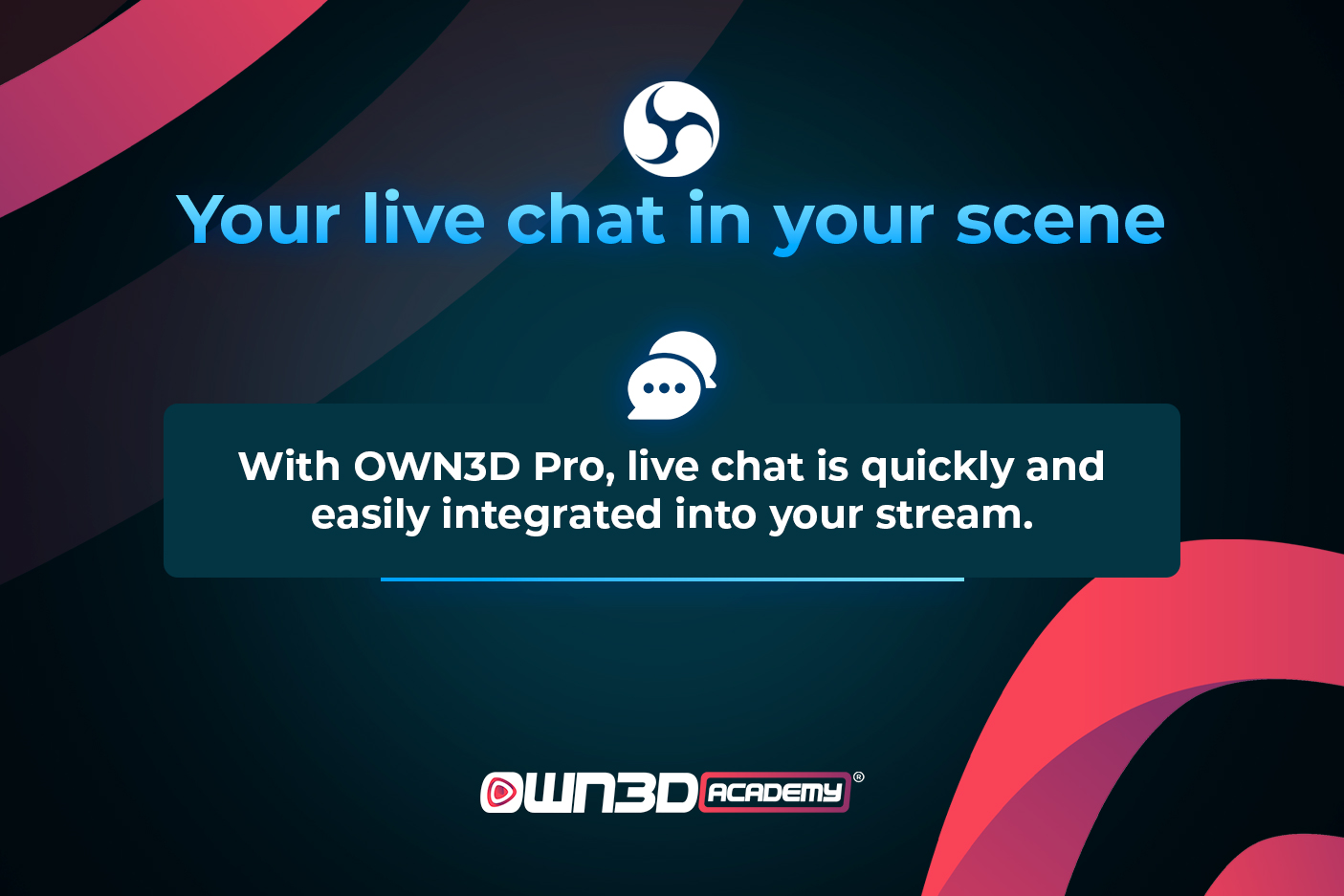
This lesson is for those who have already registered for OWN3D Pro and installed the OWN3D Pro tool for OBS Studio. If you still need help with this, take a look at the OWN3D Pro: Setup and First Steps chapter!
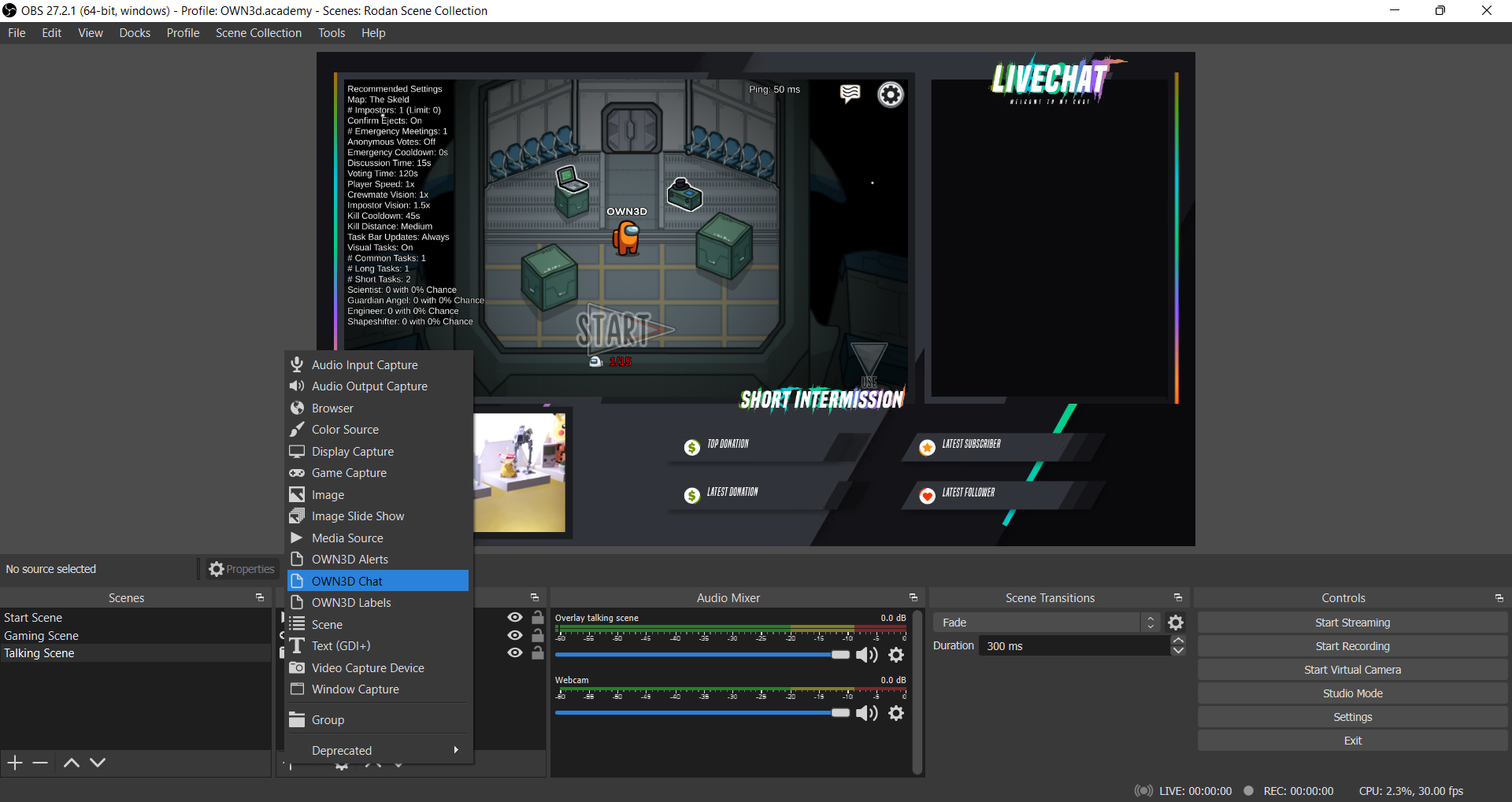
Once you have installed OWN3D Pro for OBS and logged into OBS Studio with your OWN3D Pro credentials, you can select the "OWN3D Chat" source in OBS under "Sources" by clicking on the "+". Go to "Create New", name your source (we call it "OWN3D Chat") and click "OK".
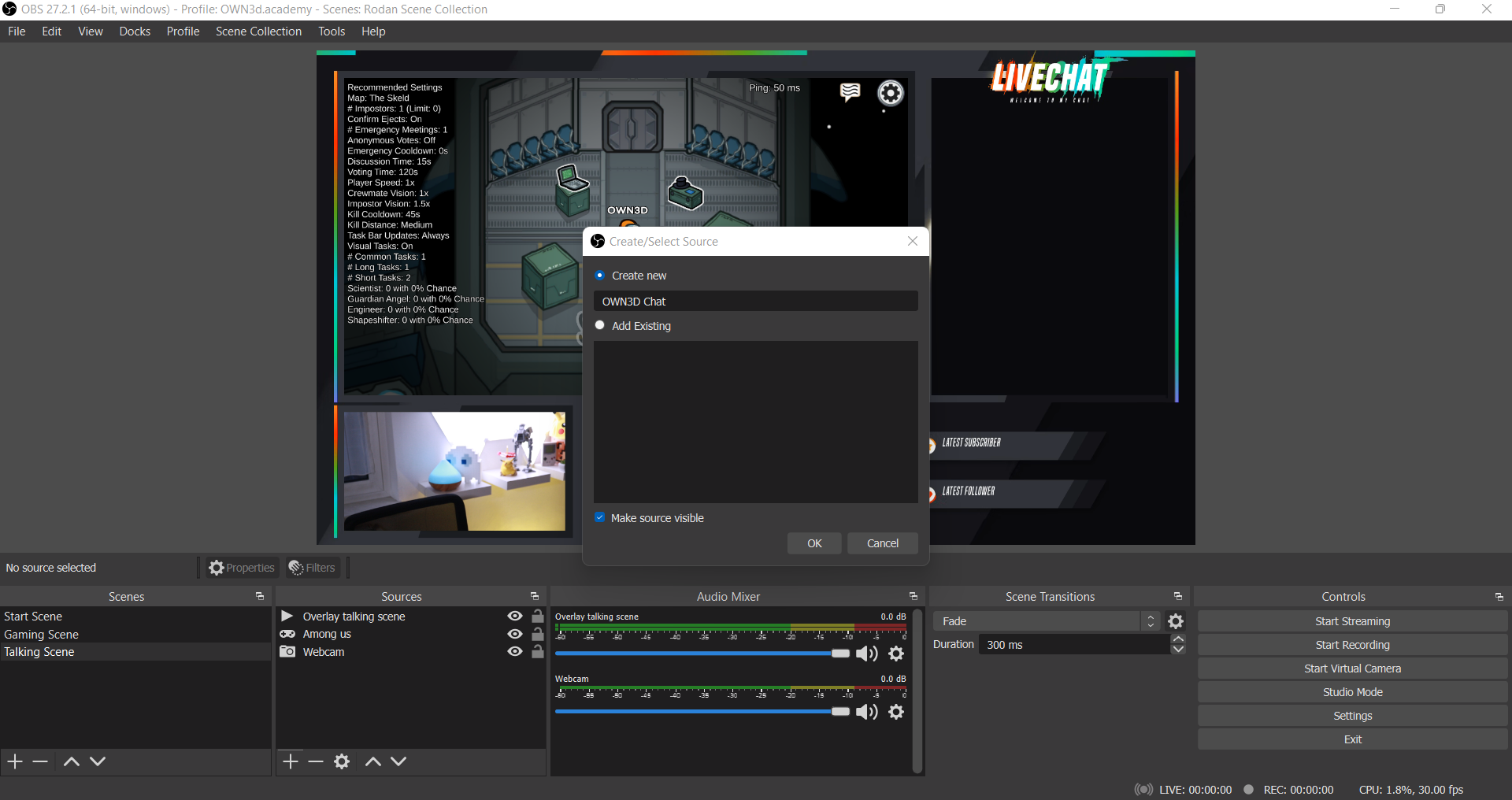
Live chat properties
Now the properties window will automatically open. Here is where you can set up your new OWN3D Pro chat source. Choose the desired color, size and font. With that, your label is ready!
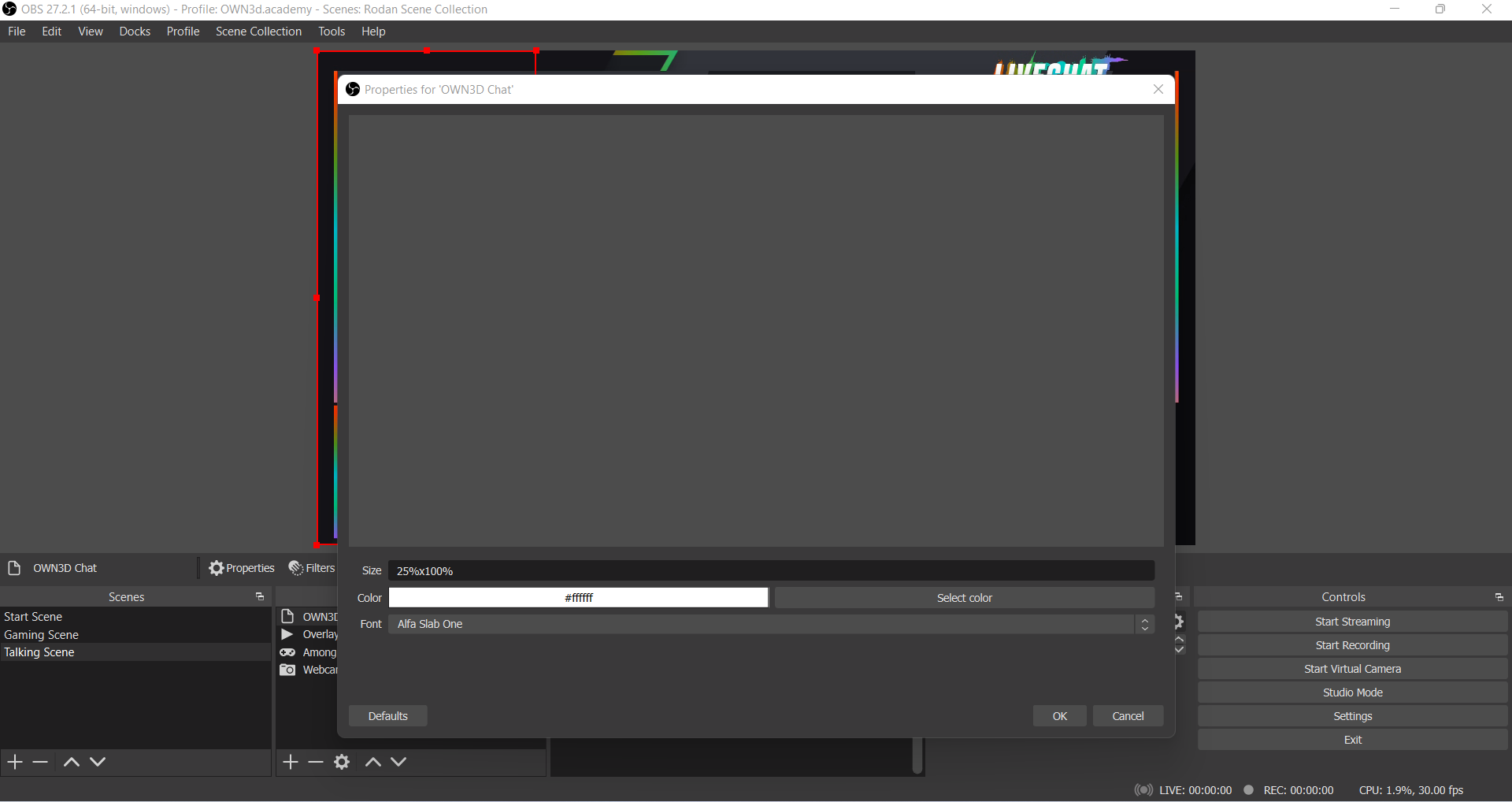
If you’d like to change your label’s size, do so within the properties menu. It is also possible to manually resize the source in Preview mode, but then the source will be pixelated.
Customizing the chat in the live preview
Now you can move your chat element. Click on the label in the "Sources" dock and you will see that a red frame forms around the label. Now you can grab and drag it around the preview screen.
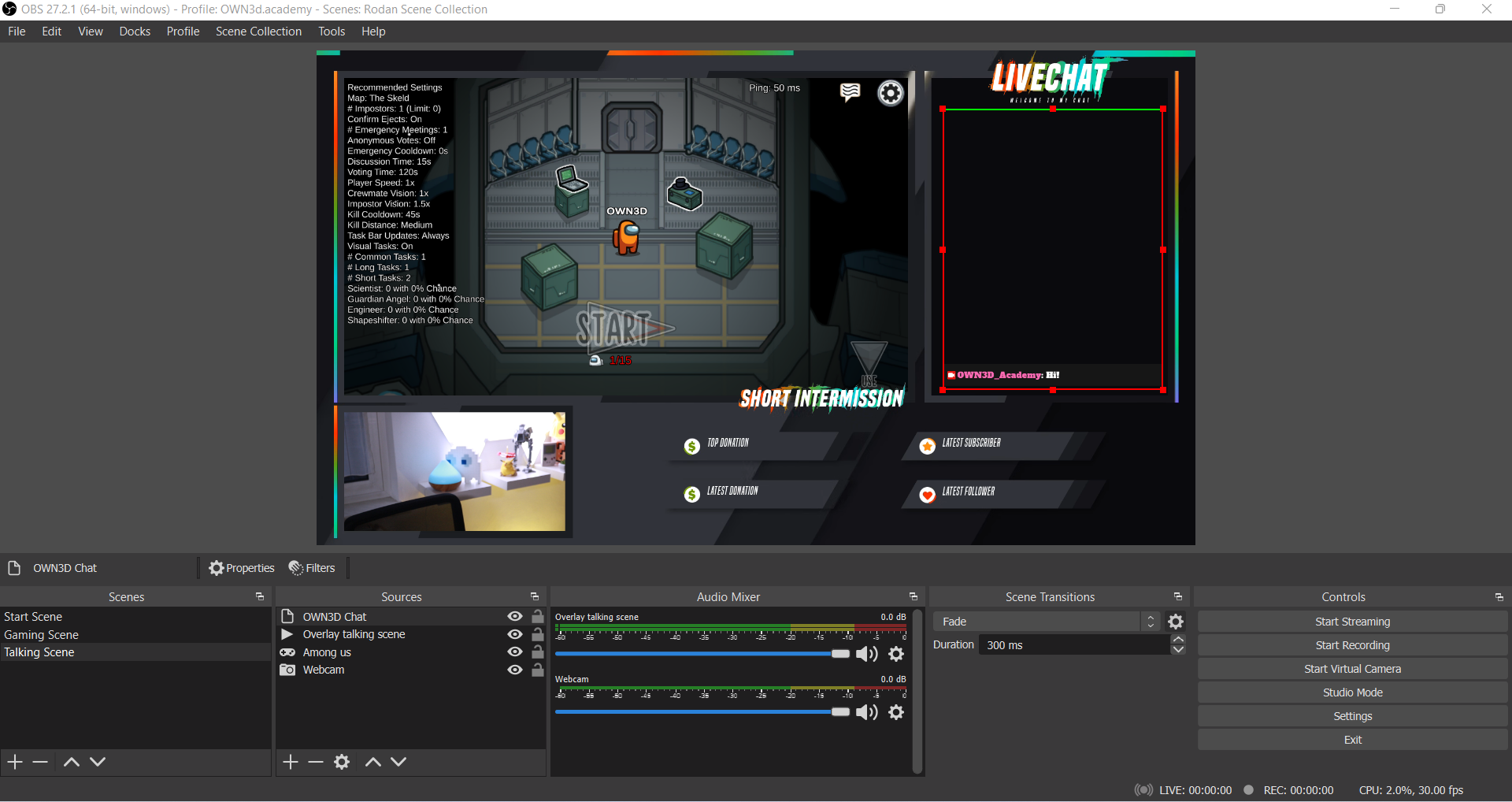
You can also crop your chat. If you want fewer messages to be displayed, click on the chat source to make a red frame around it. If you now grab the chat at the top center and simultaneously drag the red frame downwards by pressing "Alt", you will trim your chat. The frame of the trimmed area will now turn green.
Make sure to always crop the chat from the top: if you crop it from the bottom, the new messages won’t be displayed immediately. Since there are older messages at the top, it is better to crop the chat from the top. If you crop it from the side, part of the message text or the username will disappear. If you cut away too much, you can grab the frame again with "Alt" at the same place and change the cut.
Inserting the chat in another scene
If you want to integrate your already existing OWN3D Pro chat into another scene, you can also select the source "OWN3D Chat" in the other scene at "Sources" by clicking on the "+". Since the label already exists in your scene collection, having already created it yourself, you only have to select "Add existing". Click on the chat source’s name and on "OK": now you have the exact same chat as in your other scene.
Integrating a webcam into the stream
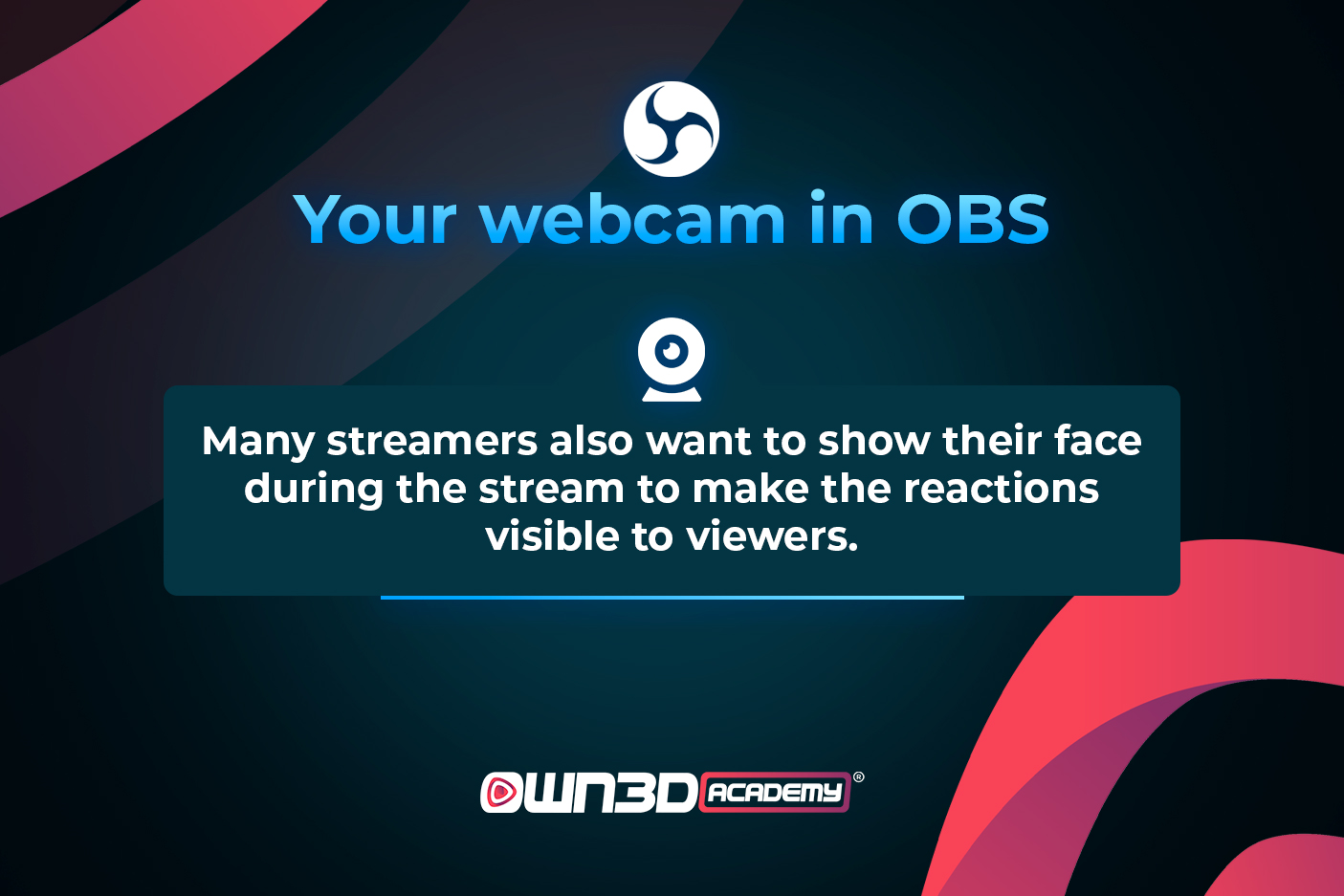
This chapter will teach you how to add a webcam source to your OBS scene. You can skip this lesson if you prefer to stream without a webcam.
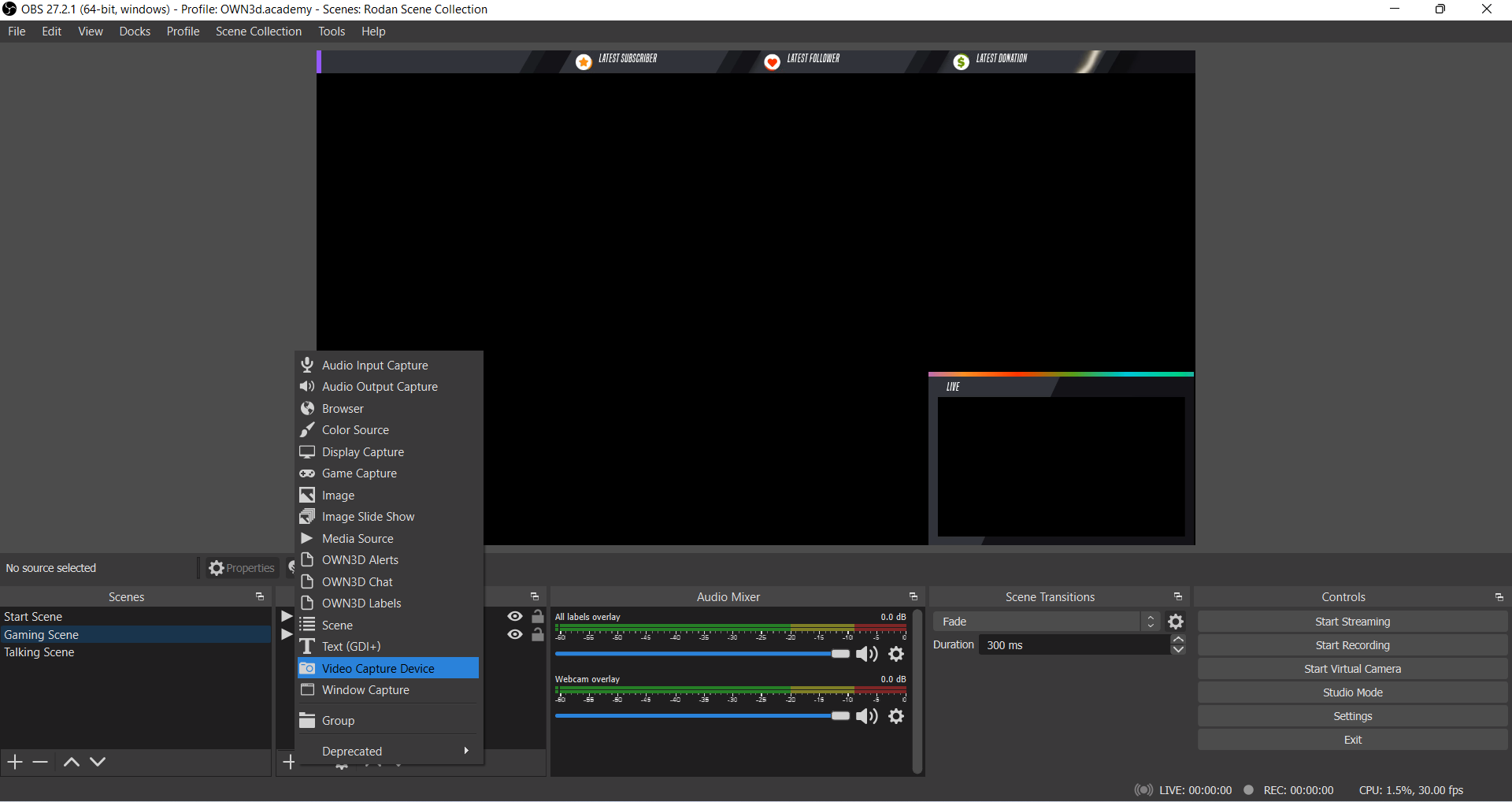
Look for the "Scenes" dock in OBS Studio and select the scene where you would like to insert the webcam source. Clicking "+" in the "Sources" dock will bring up a drop-down menu that allows you to include various elements in your stream scene. Now select "Video Capture Device" to add your device. Give it a name and click "OK".
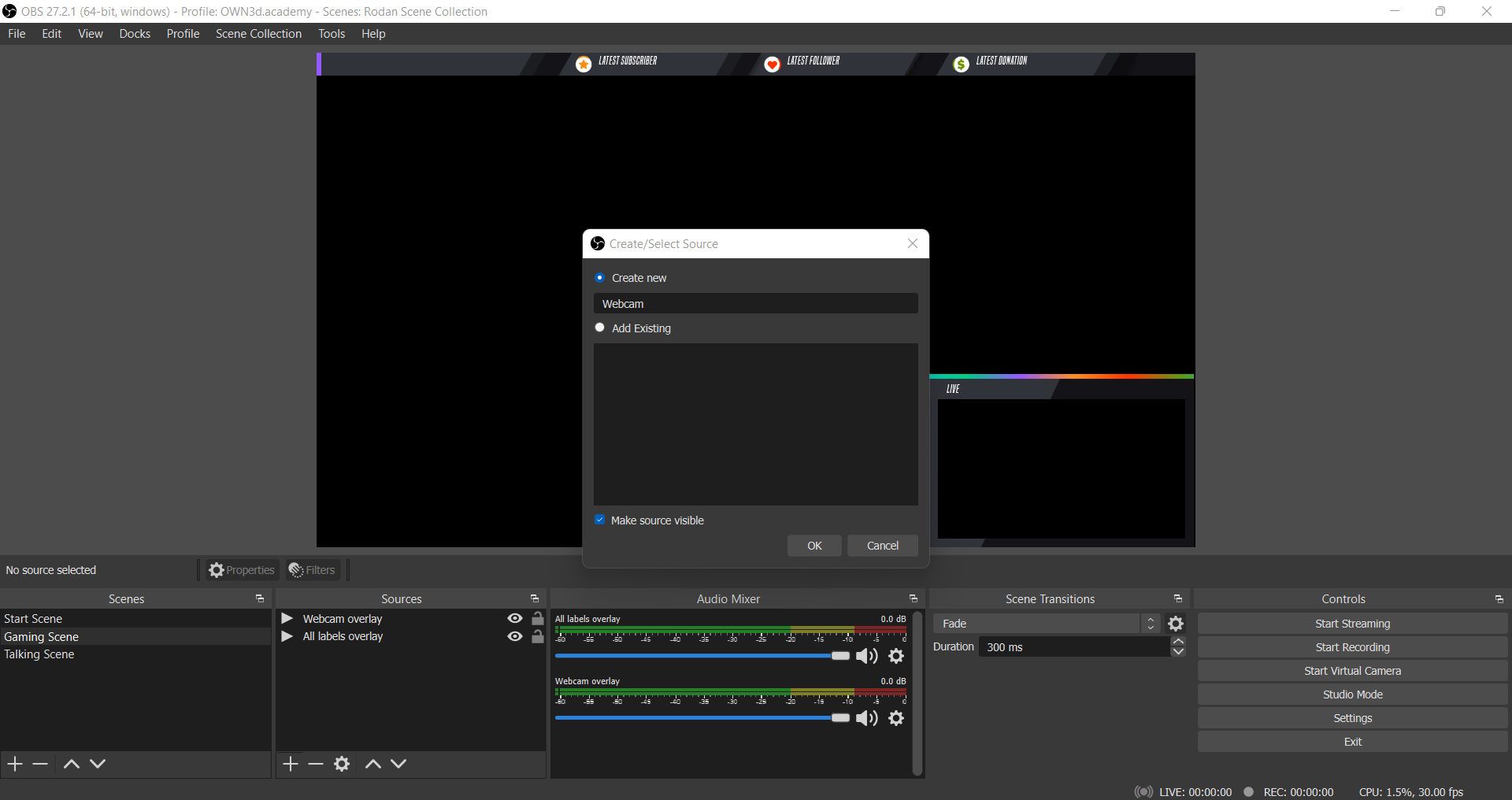
Webcam source properties
This will take you to the properties window of your new video capture device source. Select your webcam device under the “Device” setting. If everything goes right, you should now see your pretty little face in the preview. You can adjust the FPS, resolution and other default settings here. Since these can be different for each individual device, we will leave the default settings here for now. However, feel free to play around with the settings or search specifically for your camera on YouTube for interesting tutorials.
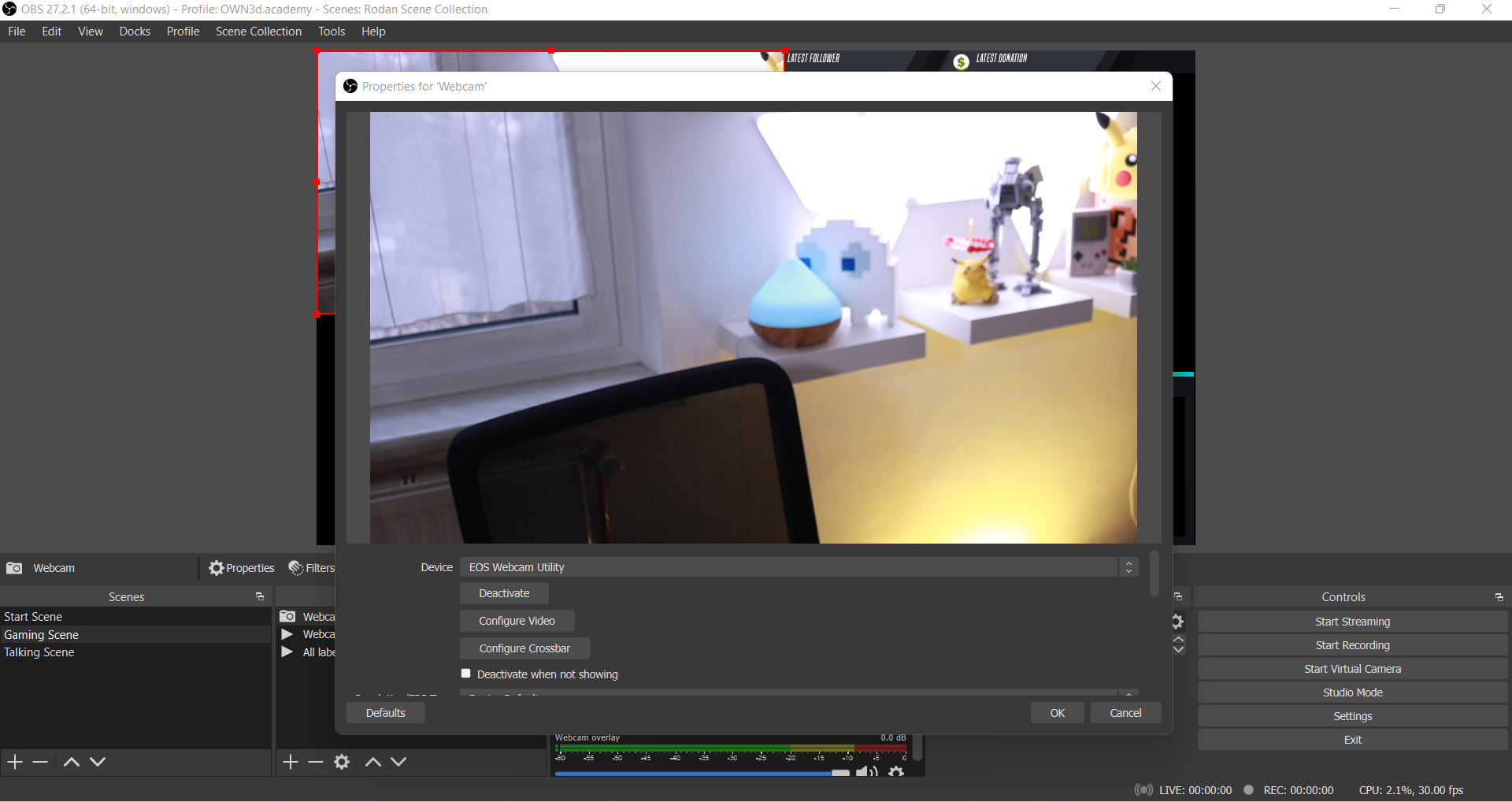
Some cameras also allow further setting changes when you click on the “Configure Video” button by bringing up its dedicated settings software - this may or may not available for your camera.
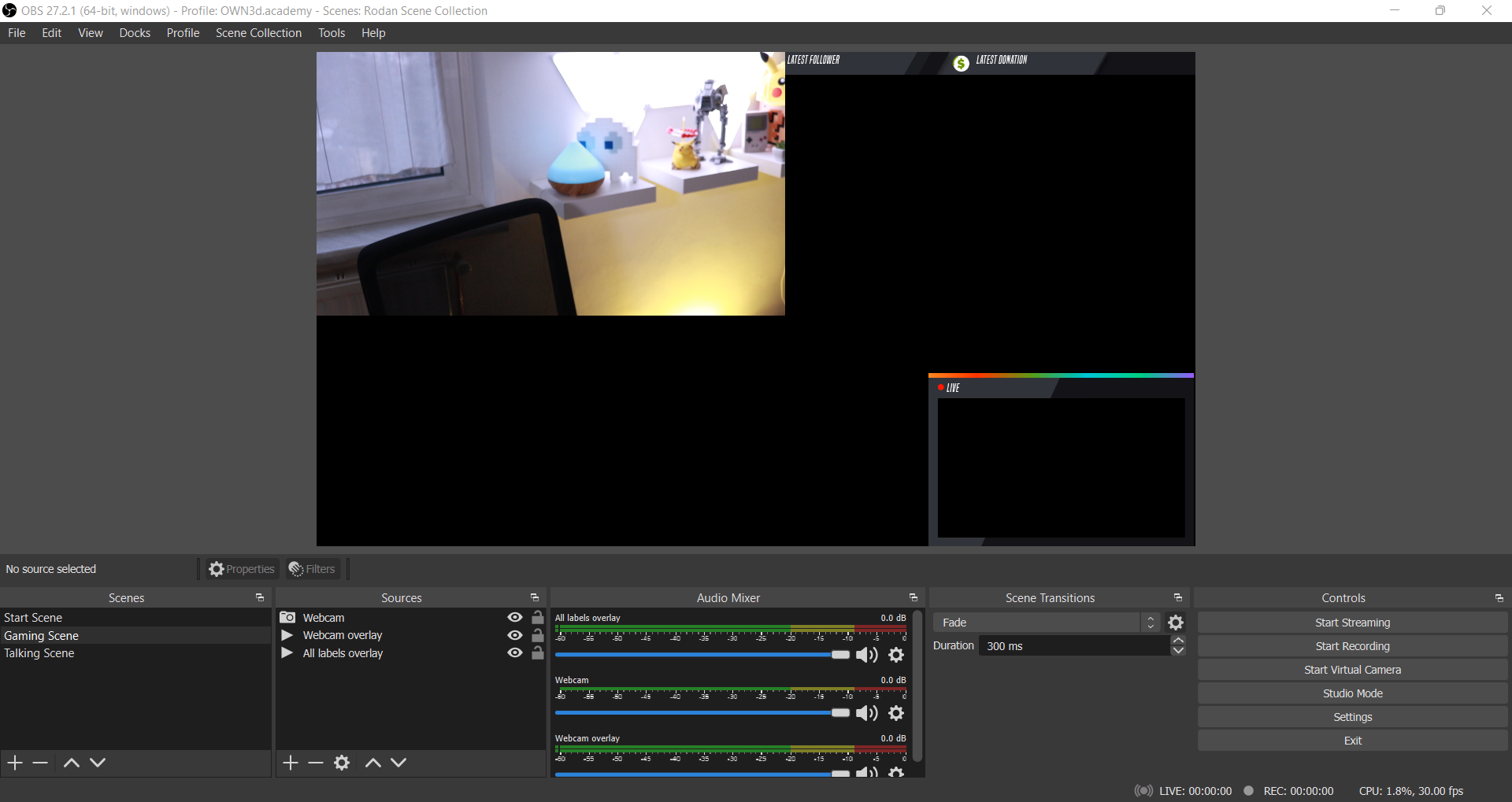
Adjust camera in the live preview
To make changes to your media source in the live preview, you can either directly click on it on the video screen or by selecting it from the “Sources” dock. A red frame will appear around it in the live preview.
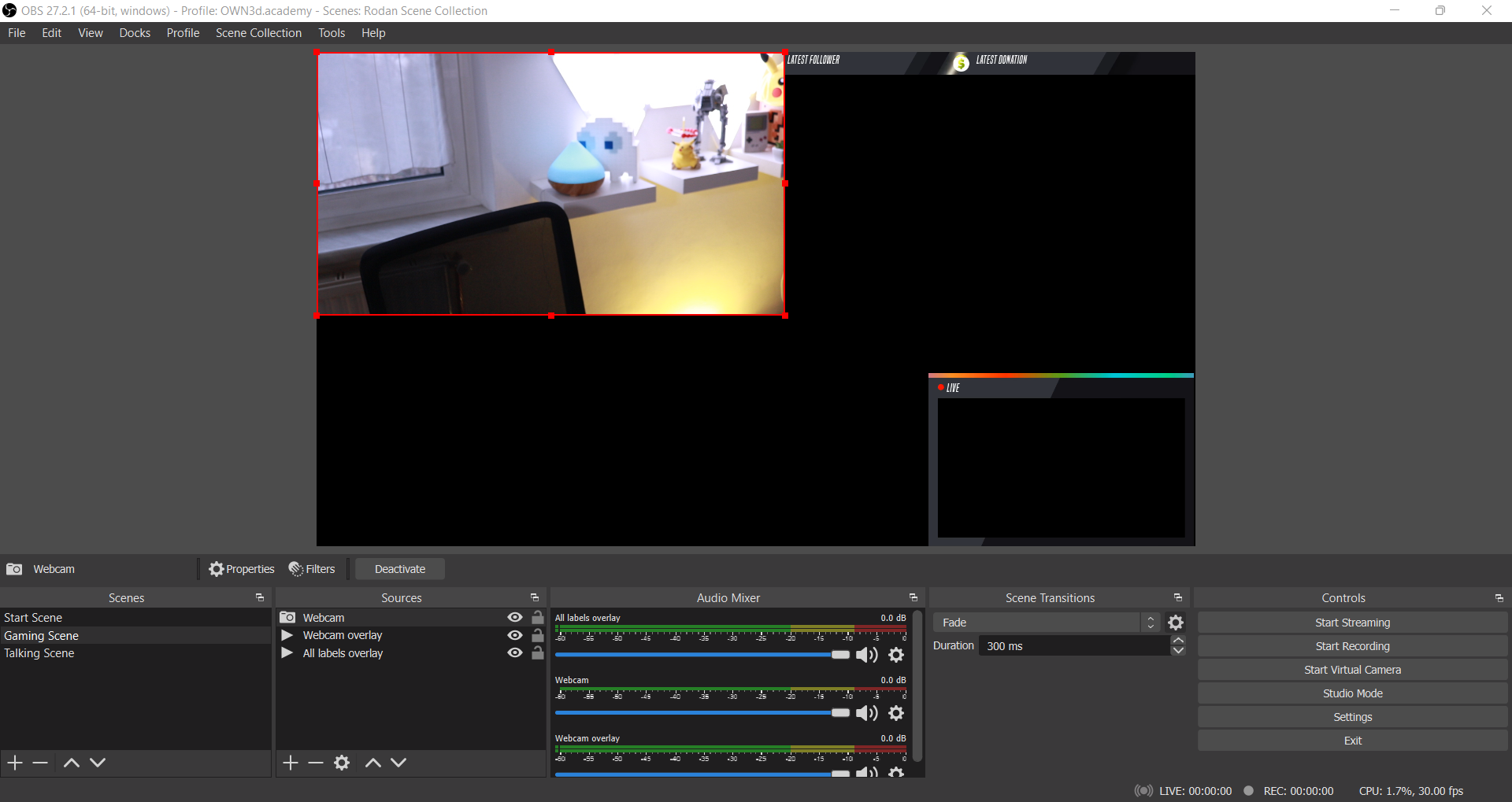
To change the size of the media source, grab it by the corners. You can move it across the screen by drag-clicking the webcam image. You can also crop it by pressing "Alt" at the same time on the edges. The frame of the cropped area turns from red to green. If you cut away too much, you can grab the frame again with "Alt" at the same place and change the cut.
If you want to move or enlarge the webcam and the frame together, select both sources in the "Sources" dock with CTRL+left click so that both are selected. Now you can edit or move both sources together.
Tips for arranging your scene with gameplay and facecam
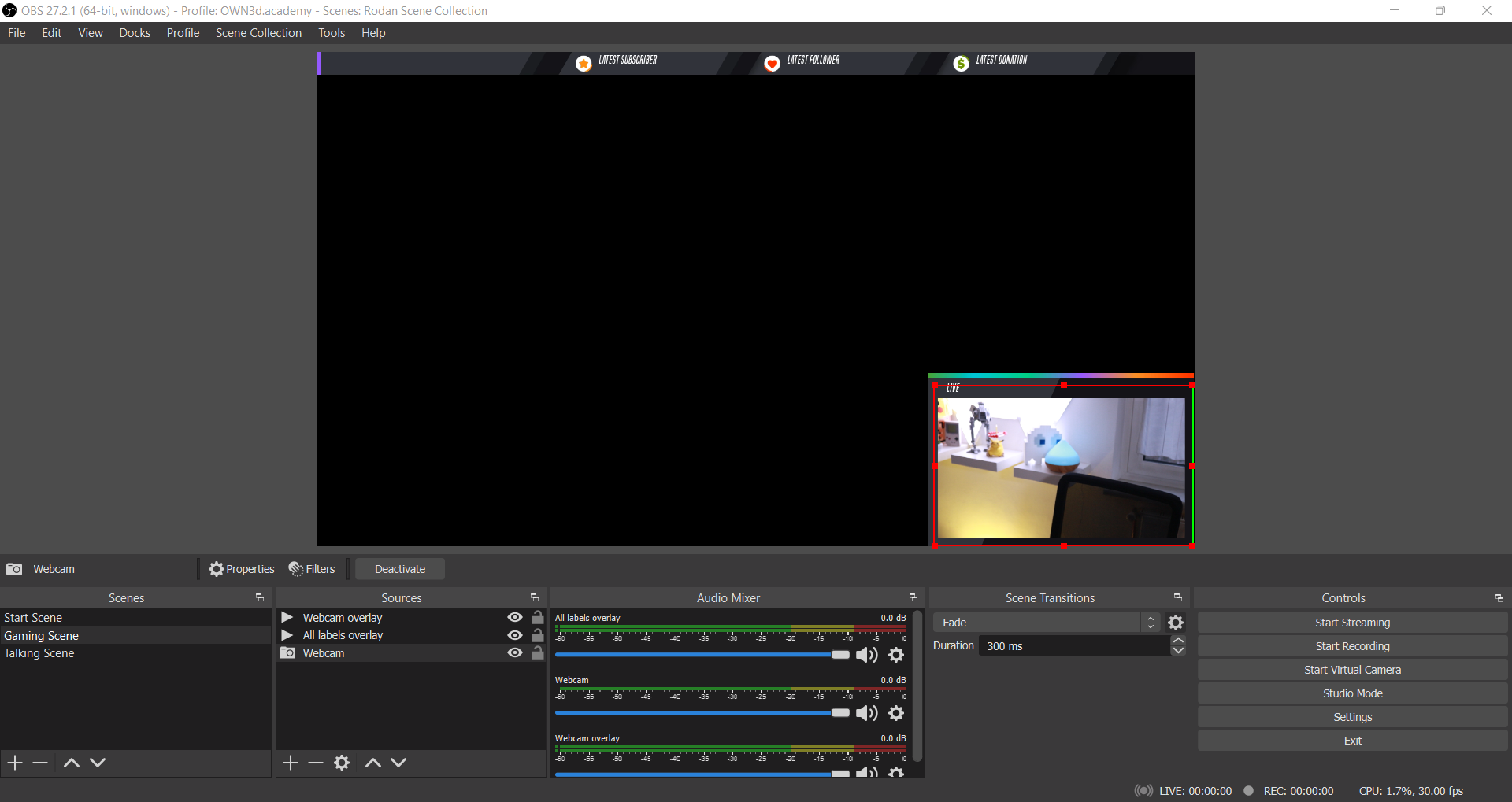
The best practice is to put your webcam into (or near) a corner so that it doesn’t cover up any important gameplay or UI (user interface) elements. Ideally, you’d position it in a way that it looks like you’re directly looking at the game in the live preview and not away from it. This gives a nice overall composition without distracting from the game.
You can also mirror the camera by right-clicking on the video capture device by clicking on "Transform" and on "Flip Horizontal".
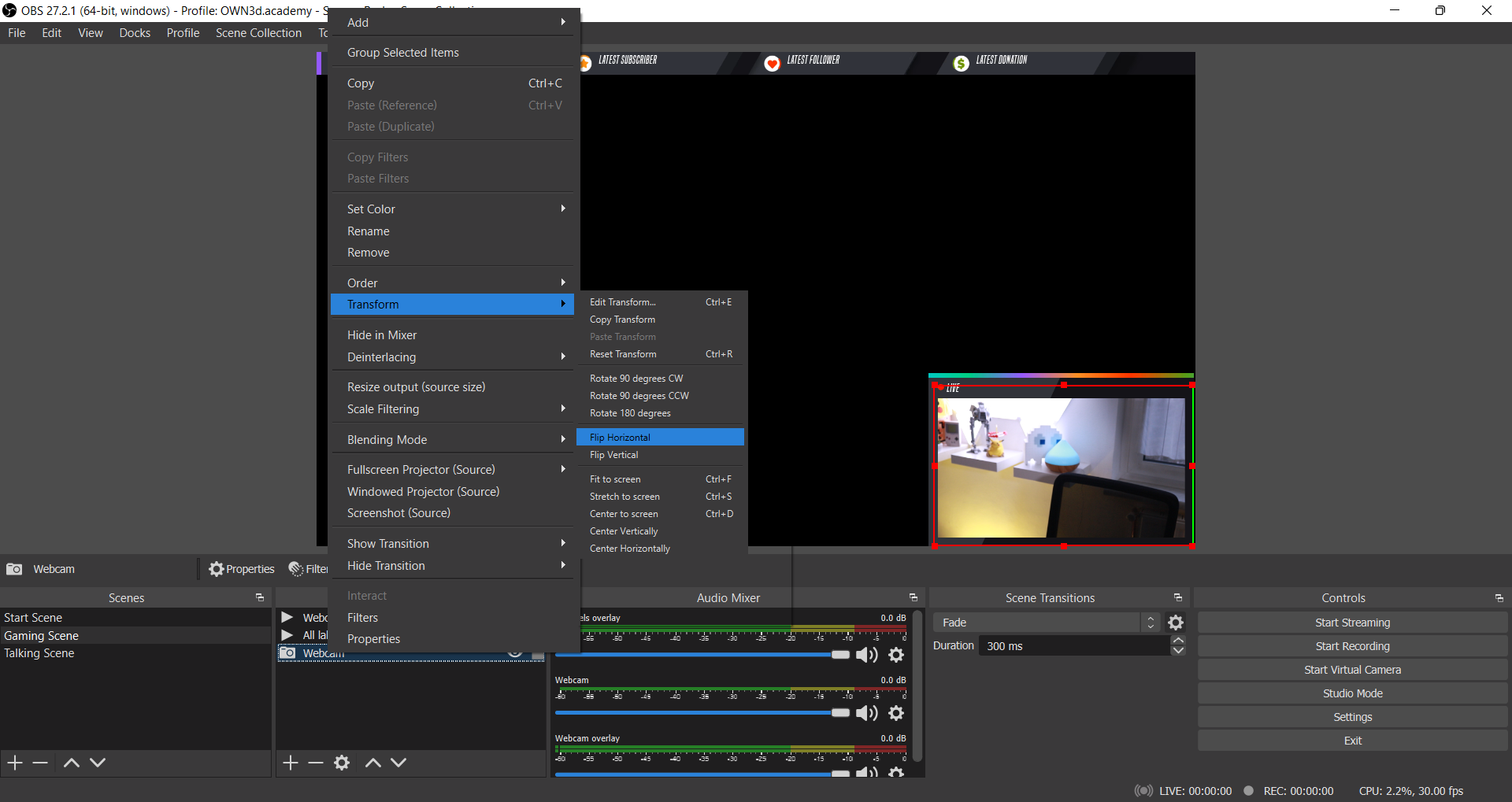
If you have an overlay or webcam frame in your scene, make sure that it is above the camera in the source order. You can arrange this by clicking on the camera in the “Sources” dock and moving it to the bottom of the “Source” dock. If the scene also includes game footage, it needs to be below the camera, generally on the bottom of the stack - so place the camera in the second to last position.
Adding game capture to OBS
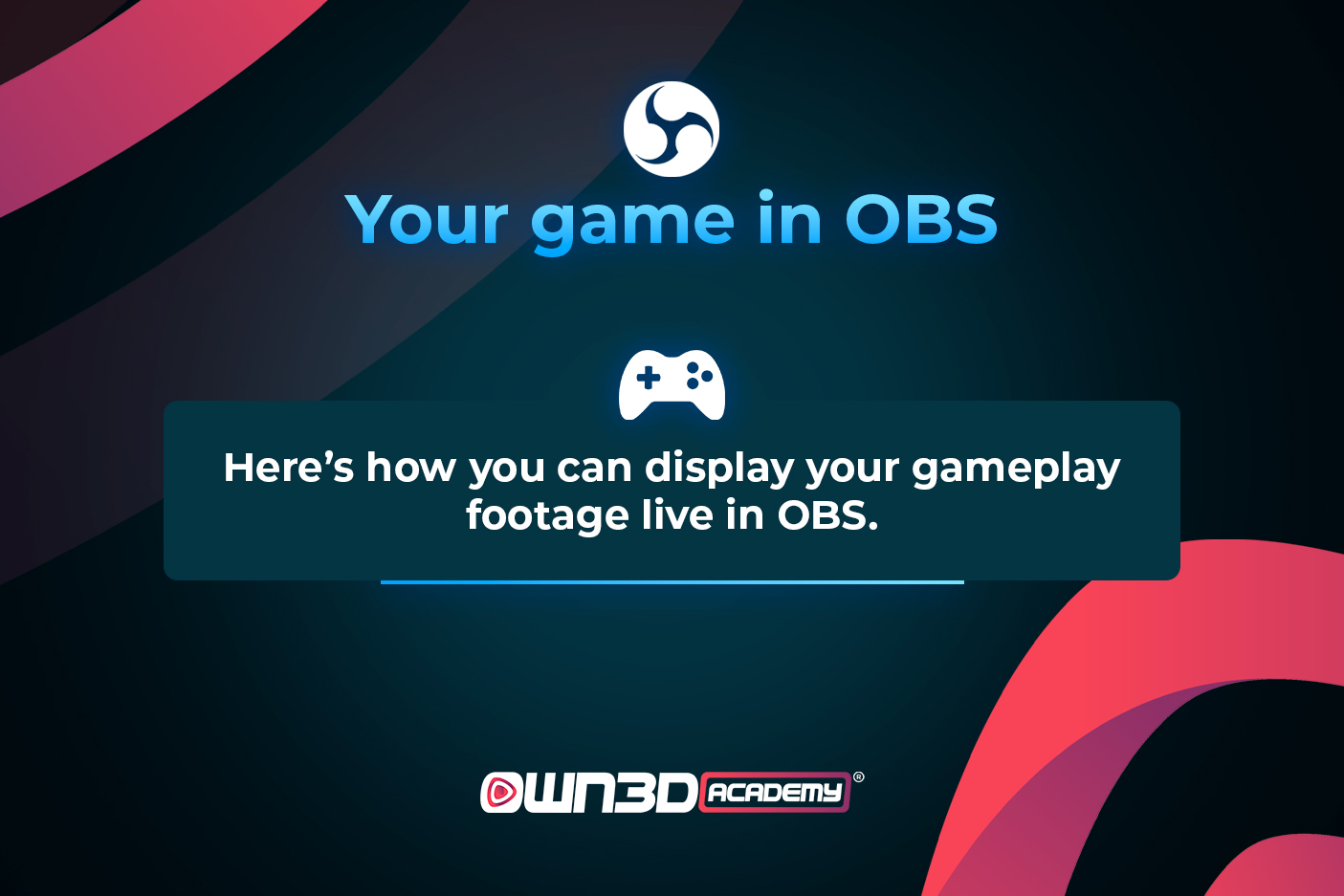
This chapter will teach you how to integrate a PC game of your choice into OBS. First, make sure that the game is running, otherwise it won’t be displayed in OBS Studio.
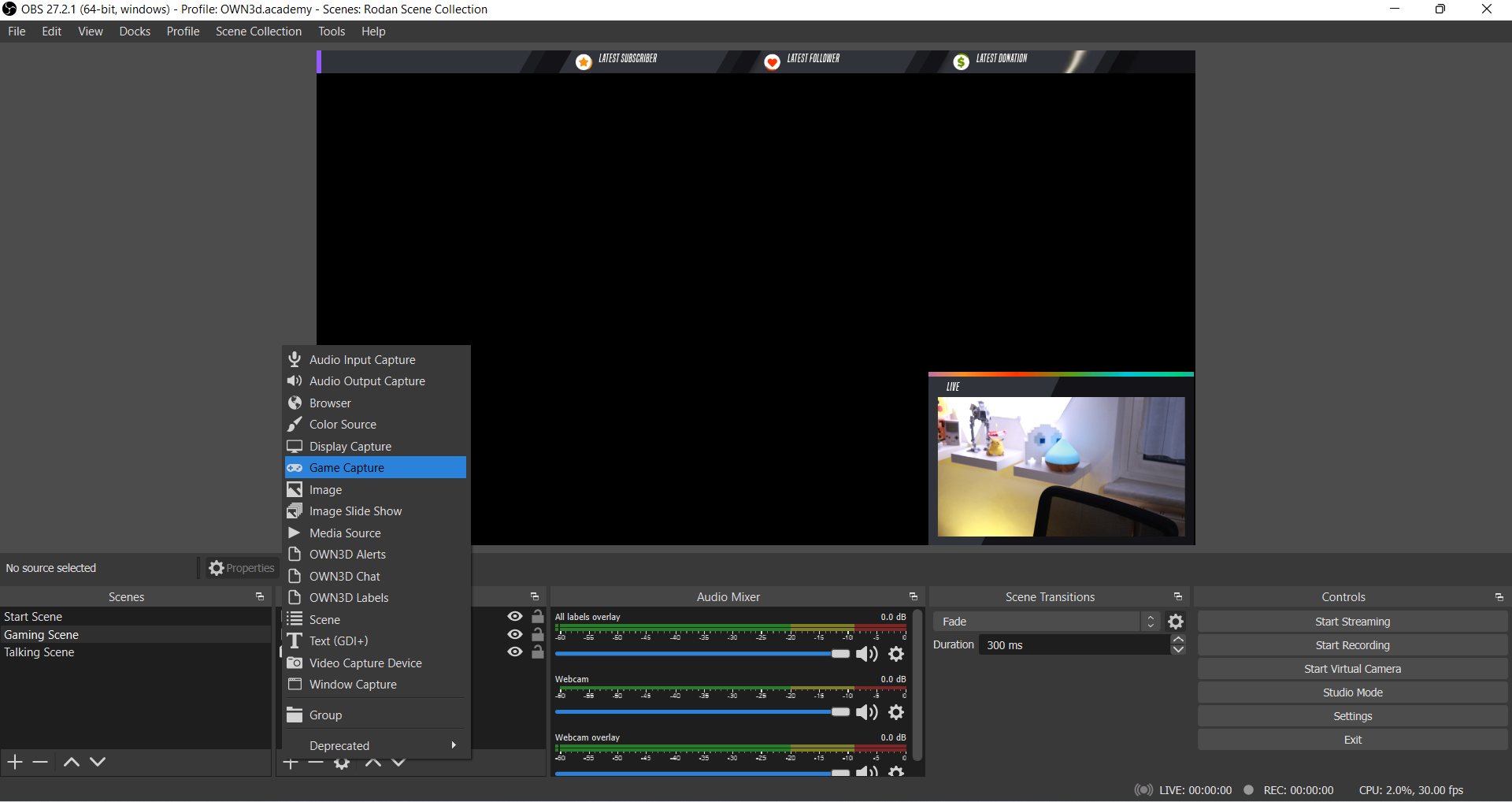
To do this, click on "+" in the "Sources" dock and then "Game capture". Name a new one or add one from the existing ones and click "OK" to proceed.
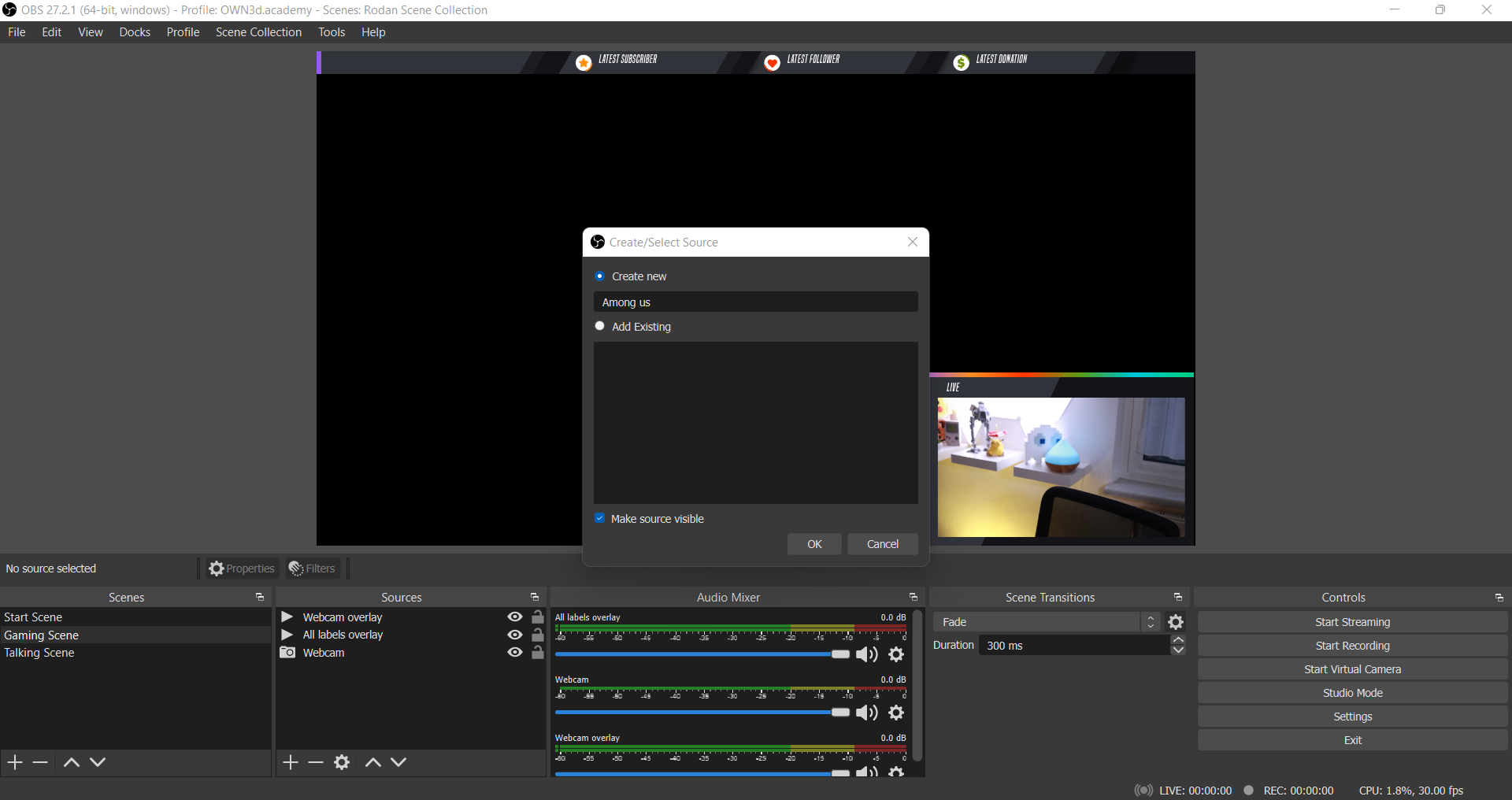
This will take you to the settings window. Here, select "Capture specific window" under "Mode" and choose your game under "Window". (You didn’t forget to launch your game, right?)
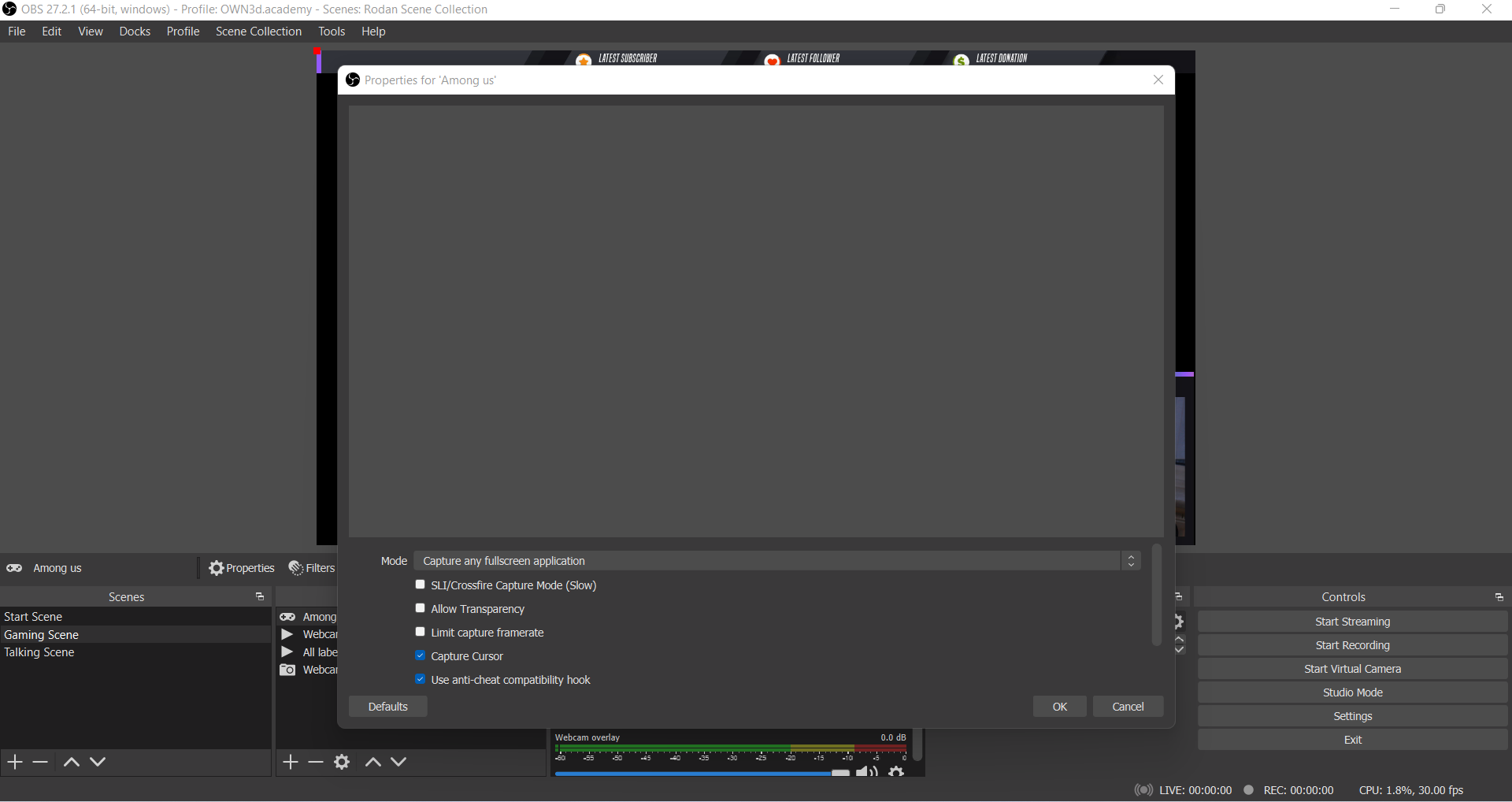
By default, the game capture source suggests “capture any fullscreen application”, but we recommend using the specific window option. This is because it doesn’t always capture appropriately, and it can get messy with multiple windows open at the same time. Selecting the specific window is more reliable and easier to adjust on a game-by-game basis as needed.
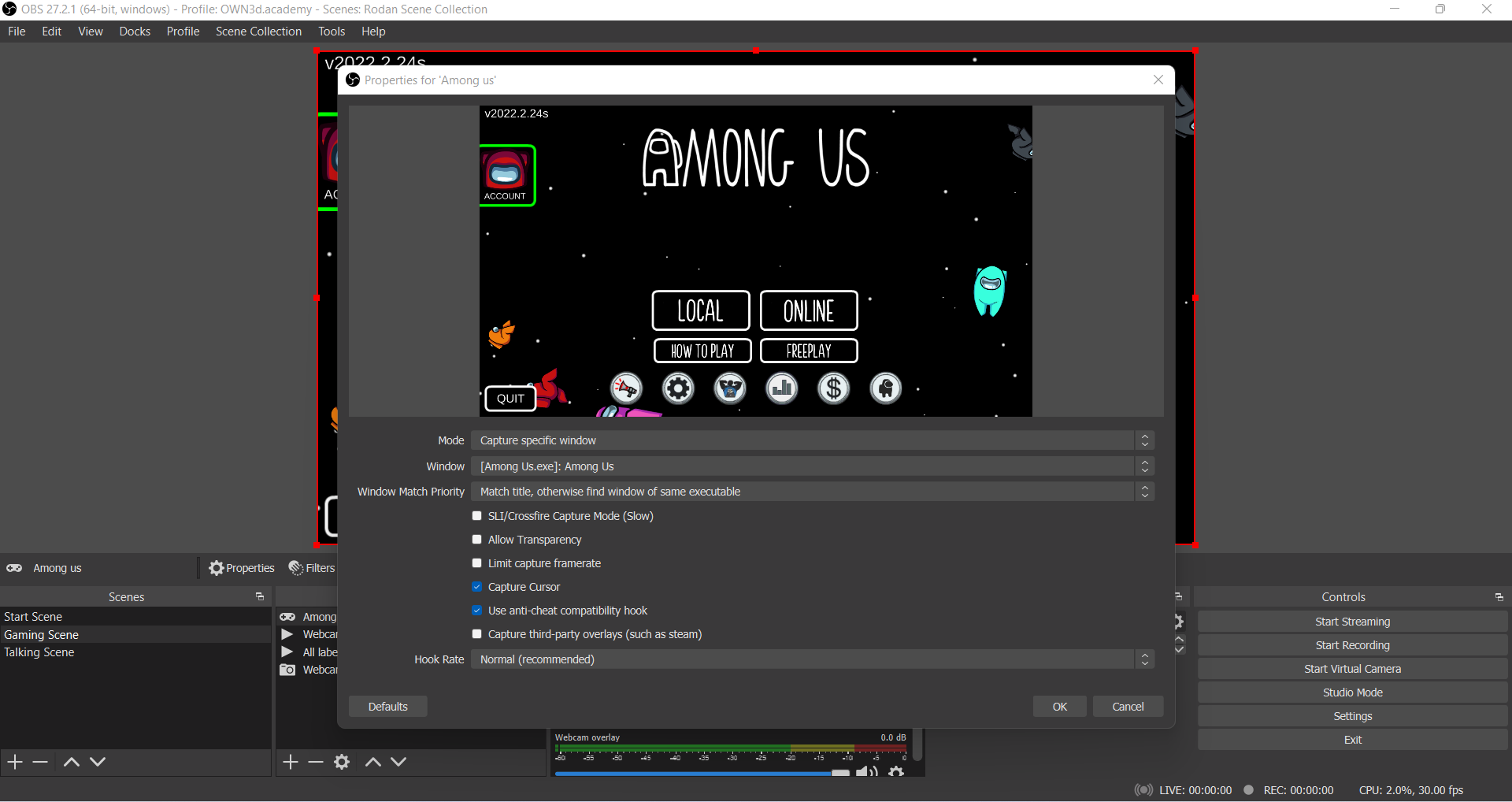
Your selection of the checkboxes depends on the kind of game you’re looking to capture. This basic breakdown should help you figure out whether you want them on or off for your gameplay footage.
SLI/Crossfire capture mode (slow): You can activate SLI (Nvidia) or Crossfire (AMD) capture mode if you want multiple graphics cards to work together in one system. In most cases (especially if you only have one graphics card), it is better to leave this item unchecked.
Allow transparency: You can activate this checkbox if you want to use certain overlays like Stream Avatars, where the characters are integrated into the stream as a game capture. (Keep in mind that these programs should not fill the whole screen but only show the characters.) Transparency makes sense for such game captures; leave this item disabled otherwise.
Limit capture framerate: This option sets your gameplay footage to the same FPS as your OBS settings. So if you have set OBS Studio to stream at 60 FPS, but your game is running at 200 FPS, your game will still only be displayed at 60 FPS in OBS. You should generally leave this option disabled, especially for fast games like shooters. However, if you’re showing slower games, like a strategy title (or your PC is struggling to keep up), feel free to enable this checkbox.
Capture Cursor: This checkbox displays your mouse cursor. You can leave it on or uncheck it, but we recommend you keep it on so your viewers can always know where you are with the mouse.
Use anti-cheat compatibility hook: Some gameplays will not be displayed if this function is disabled because some games have an "anti-cheat" software. Therefore you should always activate this checkbox.
Capture third-party overlays (such as Steam): Enable "Capture third-party overlays" if you want to capture overlays like Steam or Discord.
Once you have finished your settings, click "OK".
Make sure that the overlay is above the game capture in the source order. If this is not the case, click on game capture in the "Sources" dock and move the game capture to the bottom of the "Sources" dock.
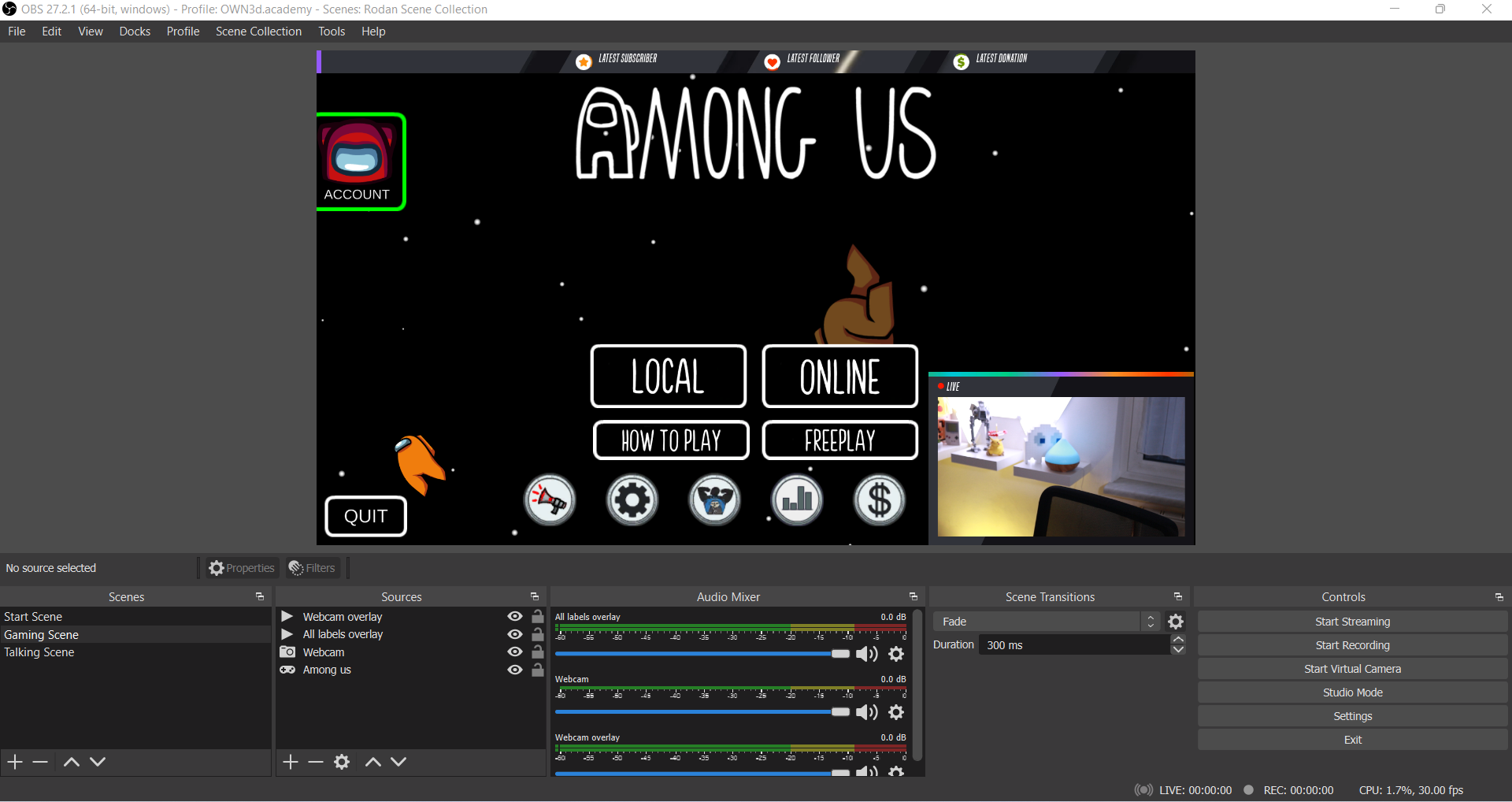
Edit game capture in the live preview
If you want to move or resize your game capture source, click on the game capture in the "Sources" dock or directly on the gameplay footage in the OBS scene. A red frame will appear around the selected source in the live preview.
To change the size of the media source, grab it by the corners. You can move it across the screen by drag-clicking on the source. You can also crop it by pressing "Alt" at the same time on the edges. The frame of the cropped area turns from red to green. If you cut away too much, you can grab the frame again with "Alt" at the same place and change the cut.
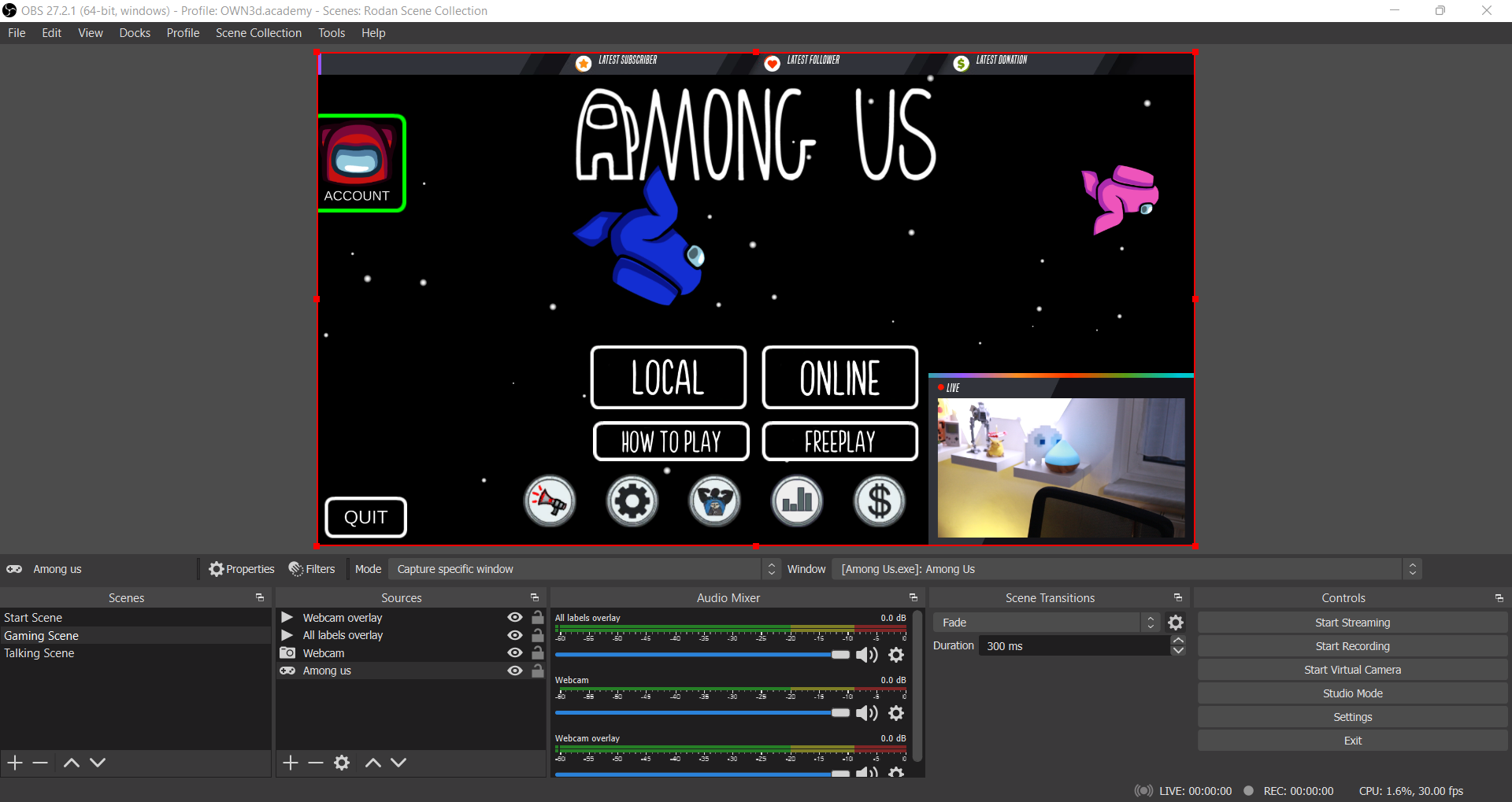
These editing options work with almost all sources in OBS. If something goes wrong, you can undo the last action with "Ctrl + Z" or restore it with "Ctrl + Y."
Ordering your sources
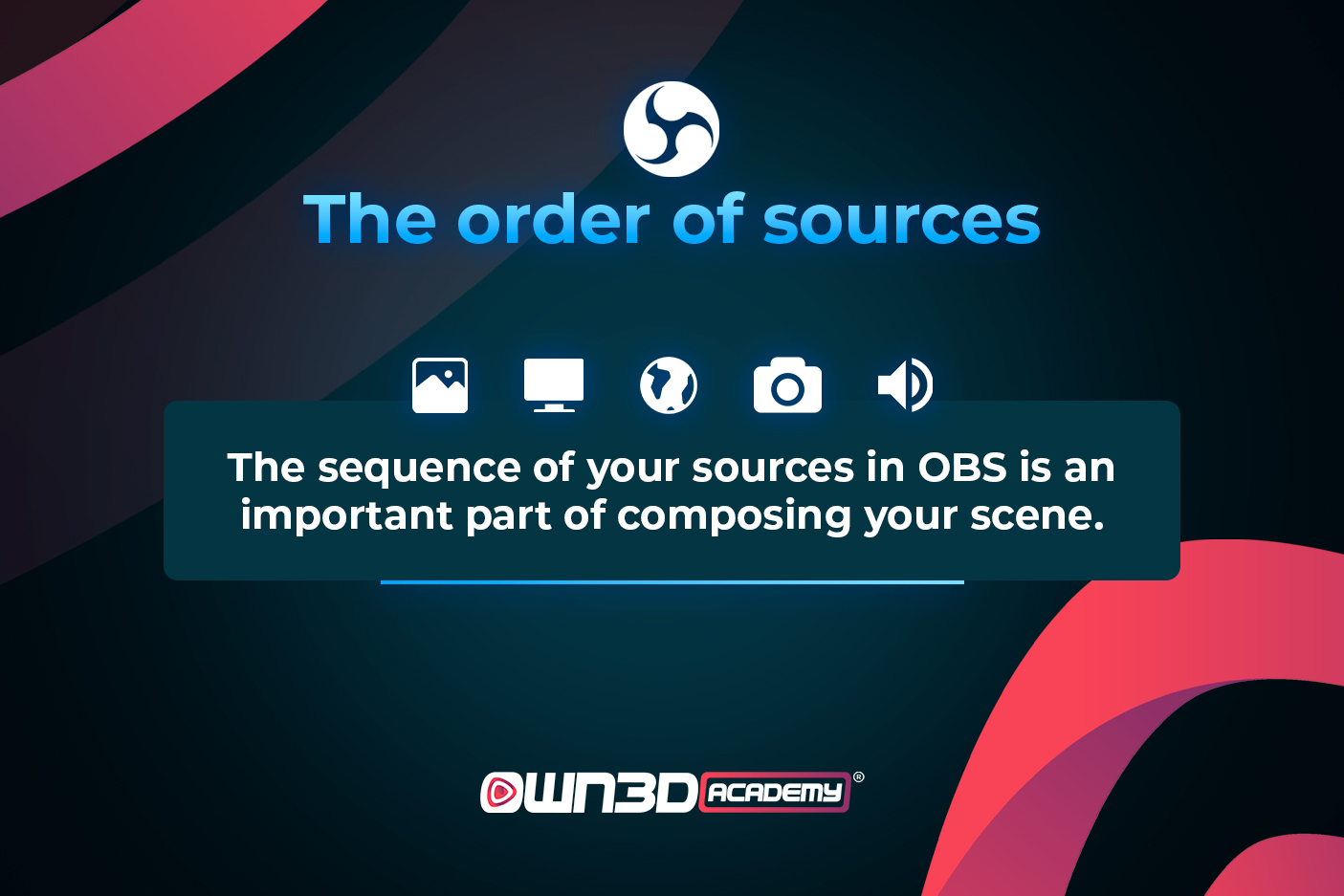
Imagine your sources like the layers of an onion or a stack of cards. The one at the top of the "Sources" dock is the source that is above all others. The source that is at the bottom, in the last position, is behind all other sources. If you don’t order them correctly, you might find that your webcam is hidden behind the gameplay footage, invisible to viewers.
So how do you determine the ideal order? In most cases, you should always display alerts or labels above the overlay, while the overlay should be above the gameplay and webcam. Something like this:
- Alerts (OWN3D Pro or similar tool)
- Labels (OW3ND Pro or similar tool)
- Live chat (OWN3D Pro or similar tool)
- Text sources
- Media source (overlays or webcam frames)
- Video capture source (webcam)
- Video capture source (capture card if streaming via PS4 or similar)
- Game capture/window capture
This order should ensure that there are no overlaps and your stream is perfectly legible. Of course, this order can be adjusted depending on your setup: not everyone has a webcam or chat integrated into the scene. It is just an approximate guideline.

